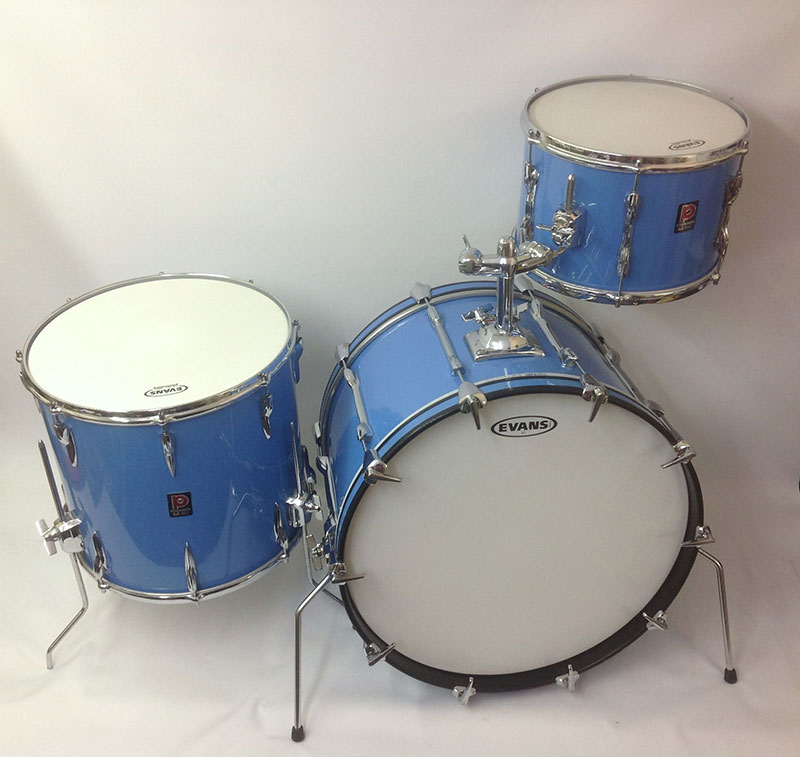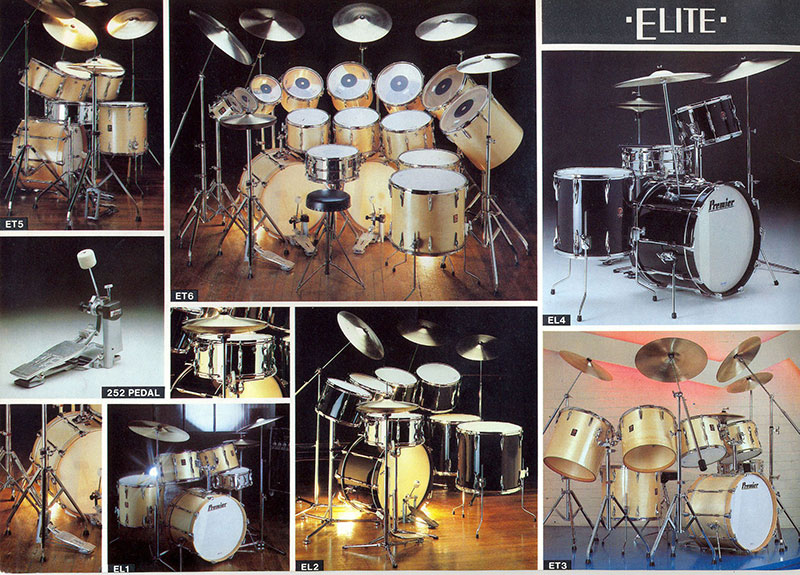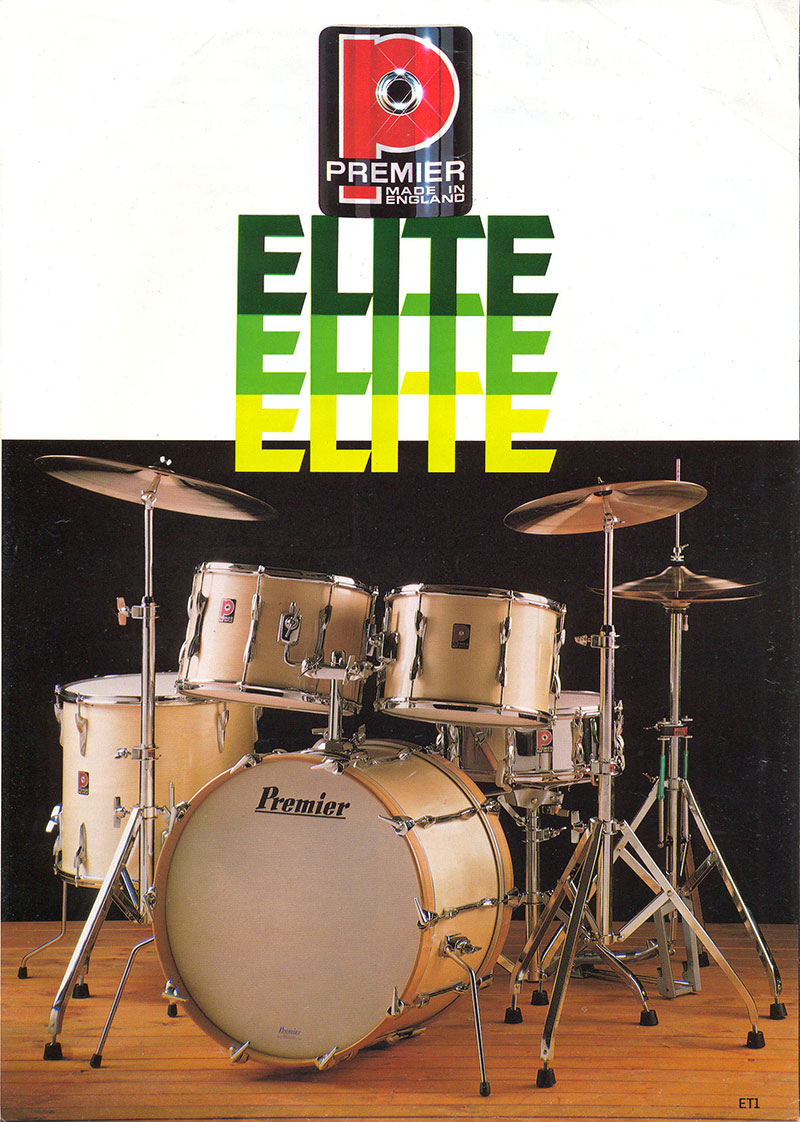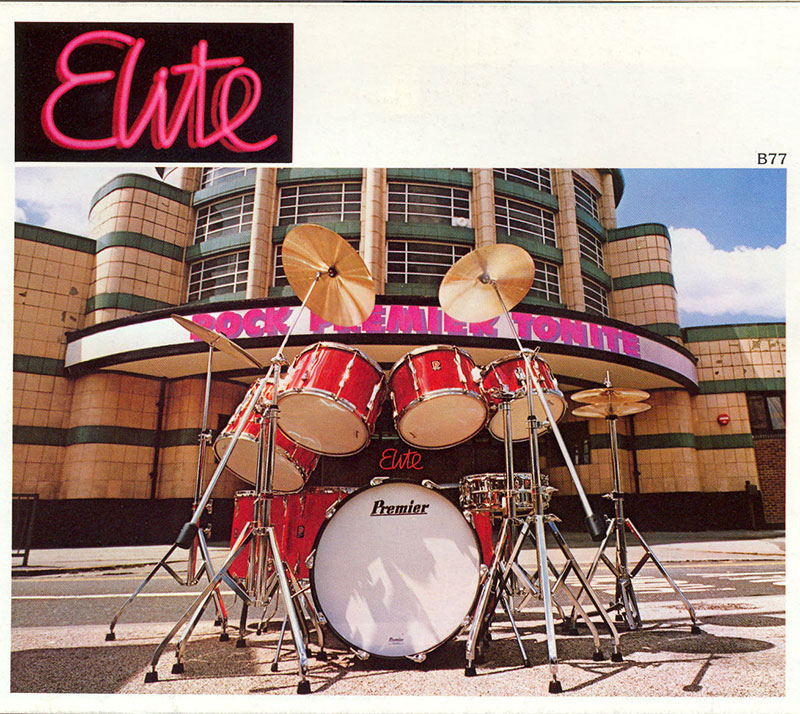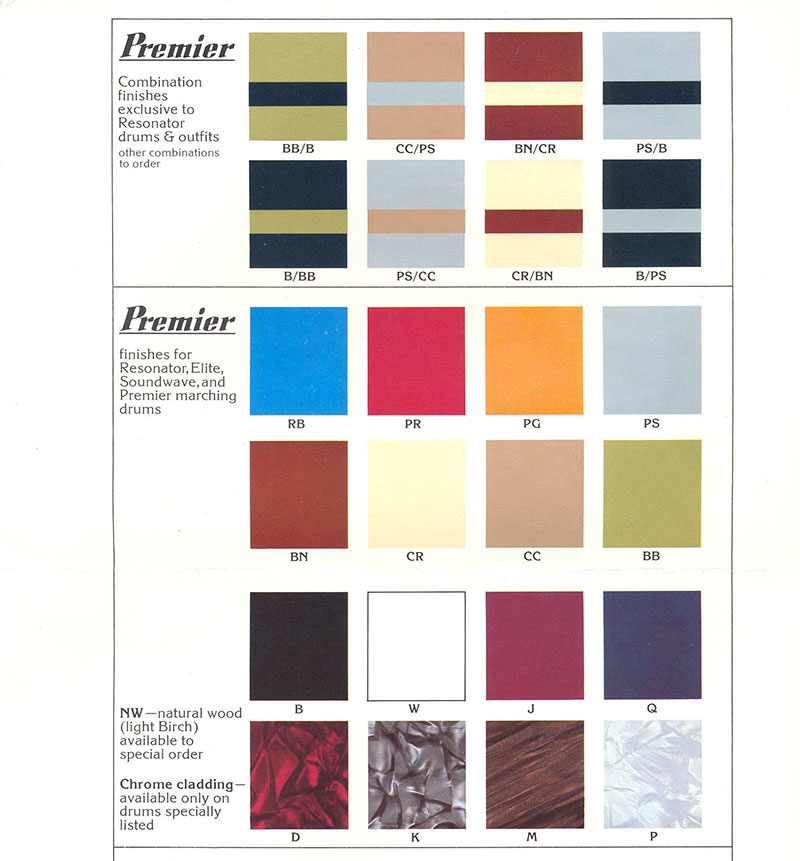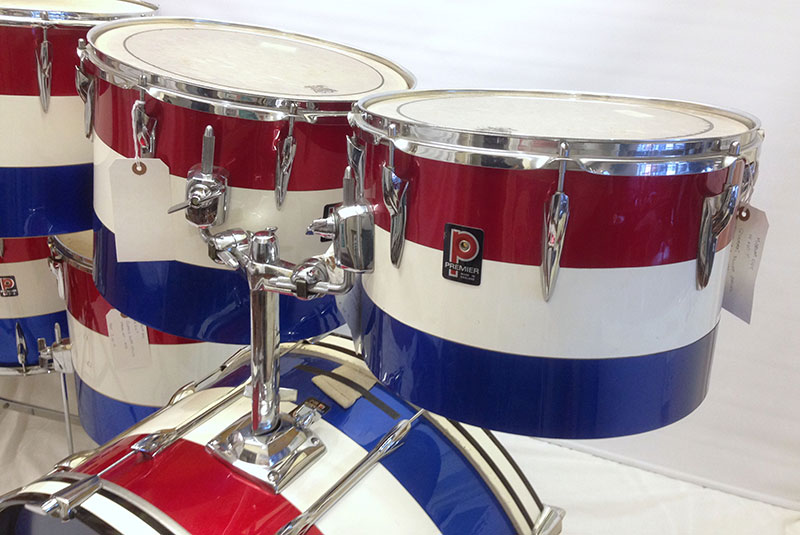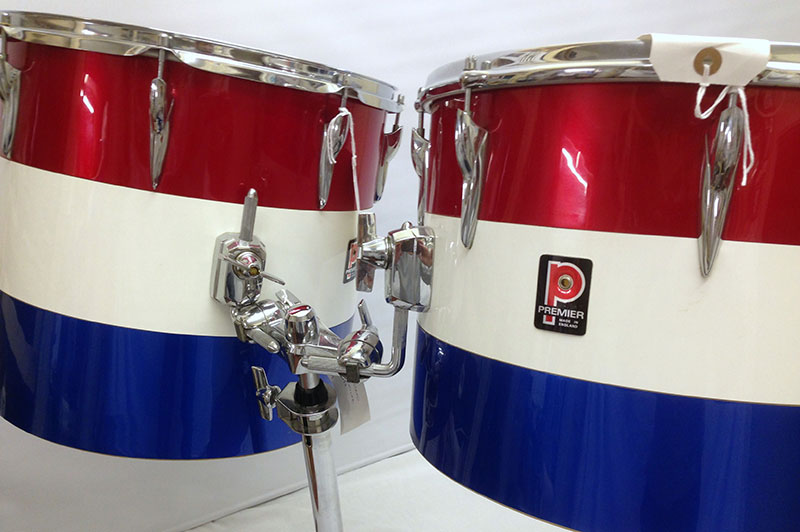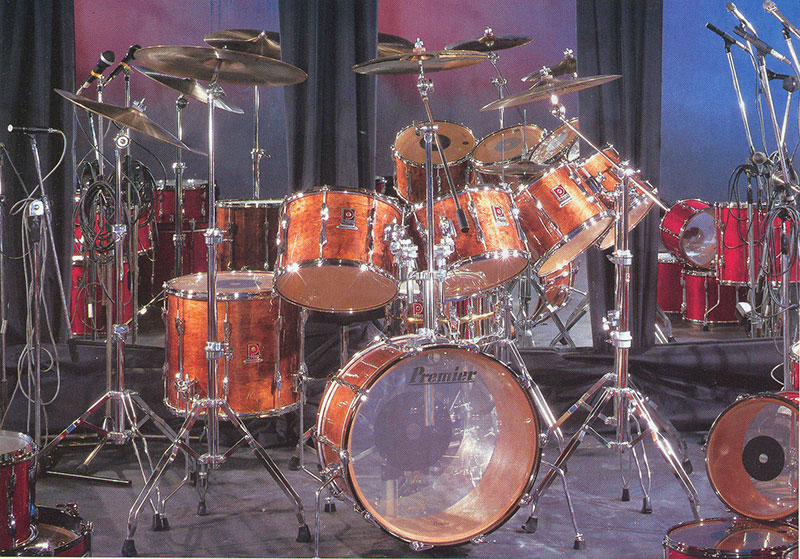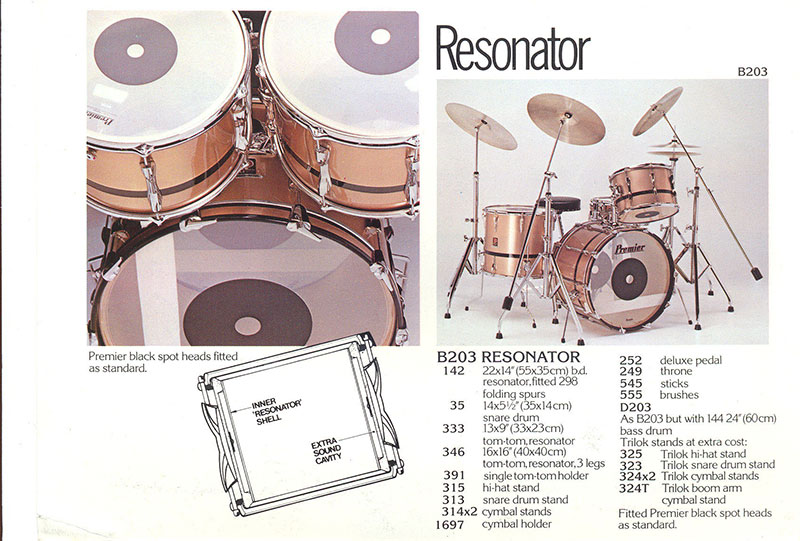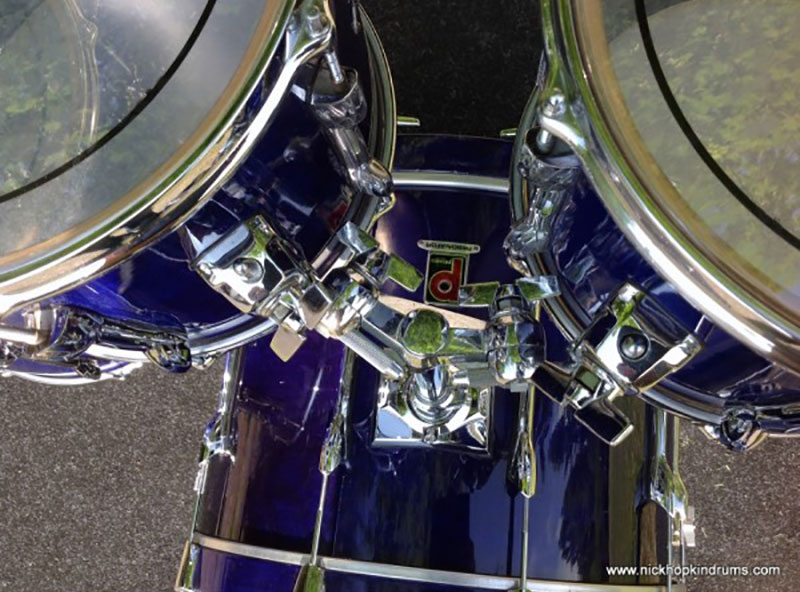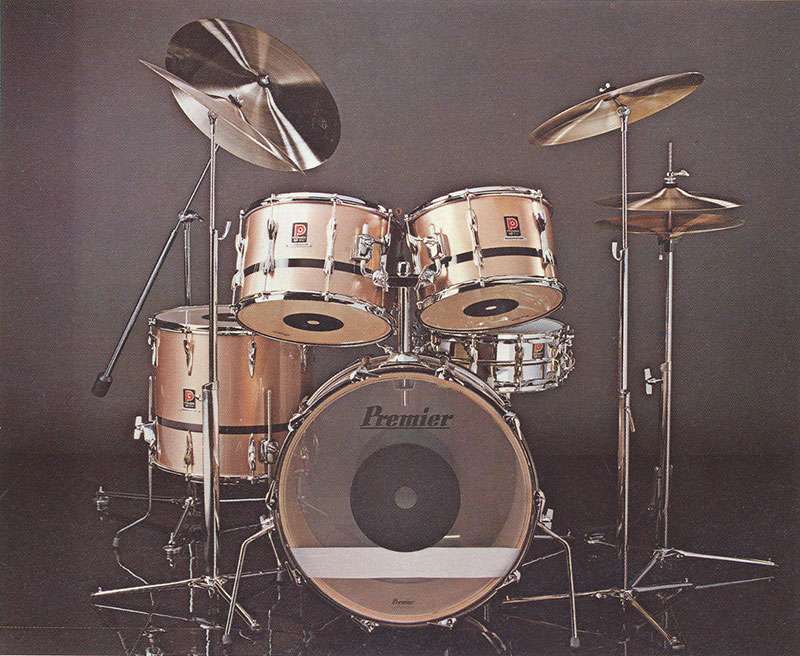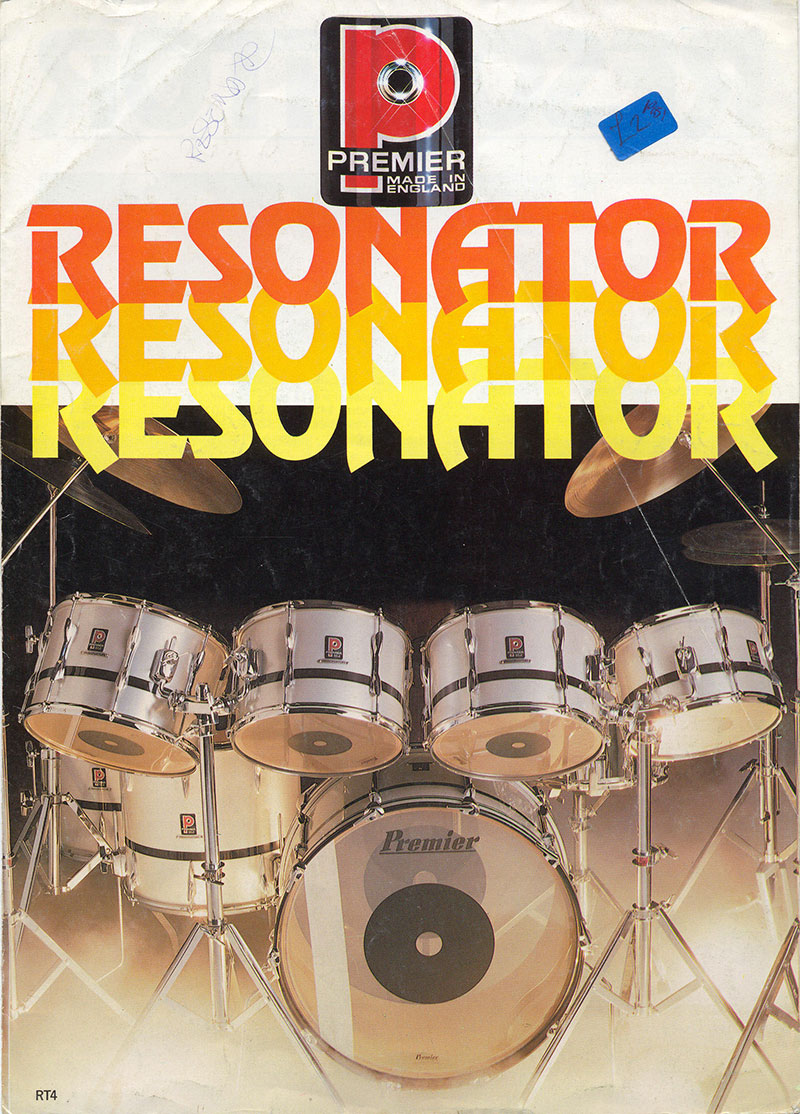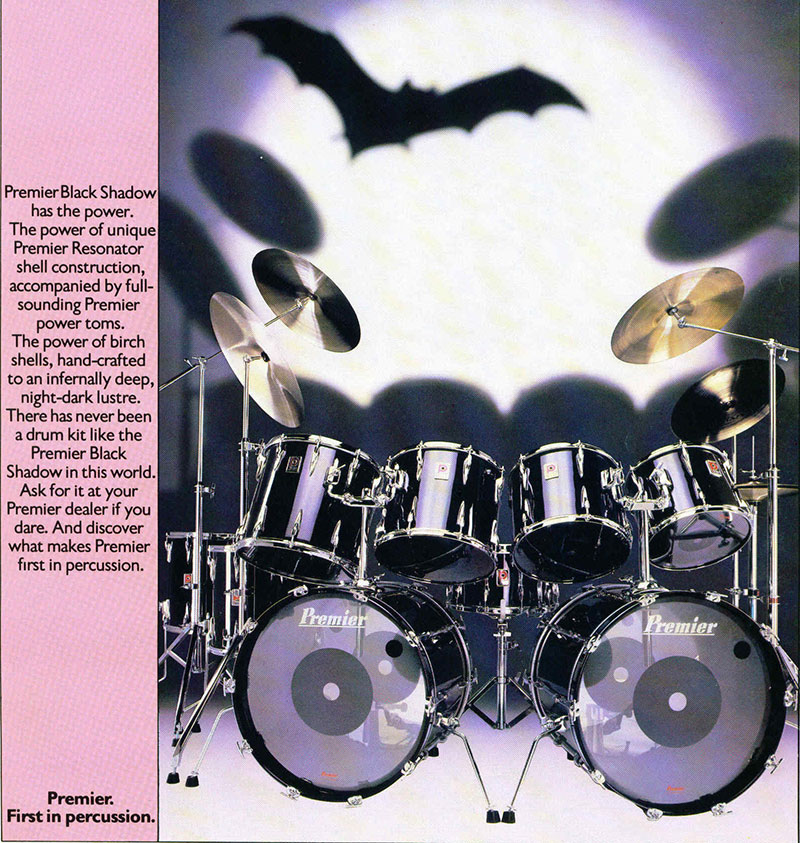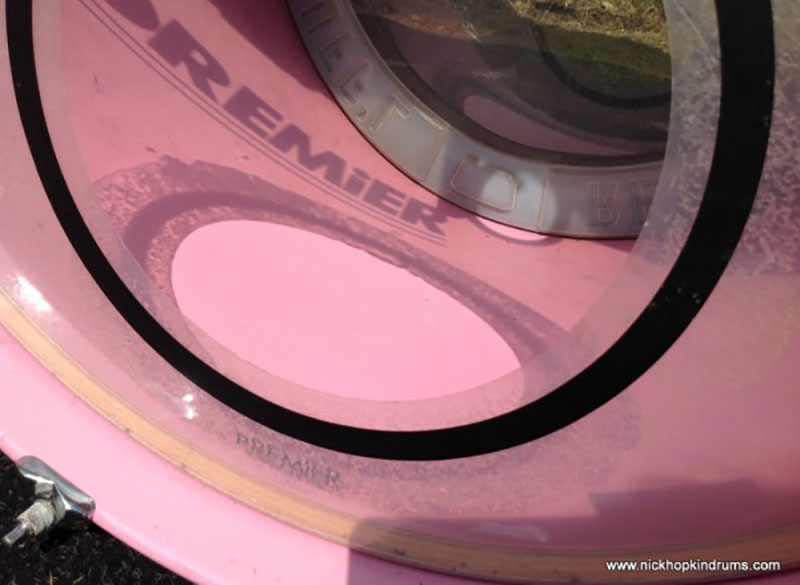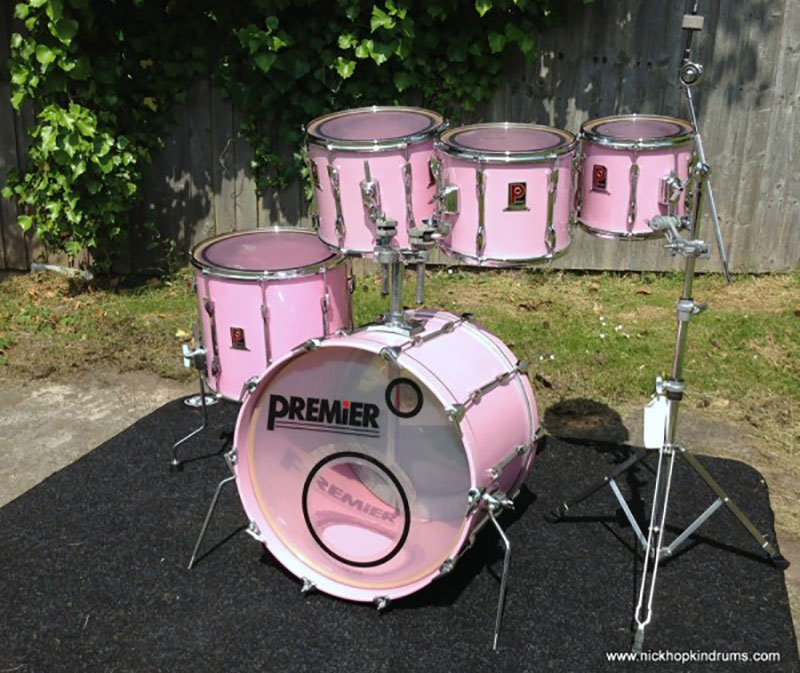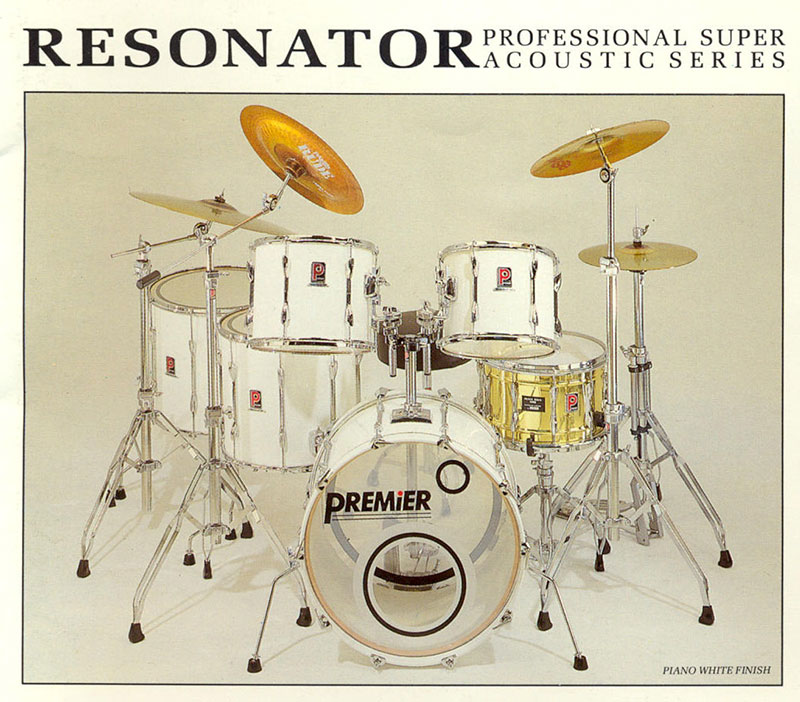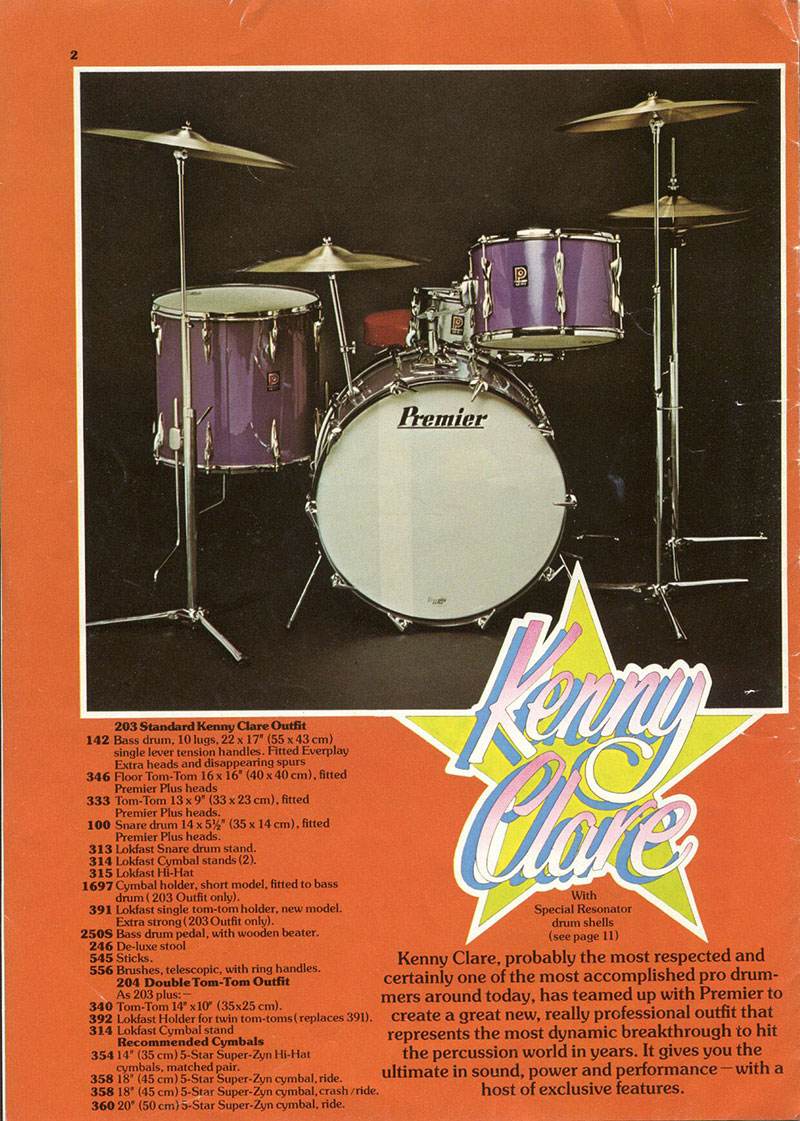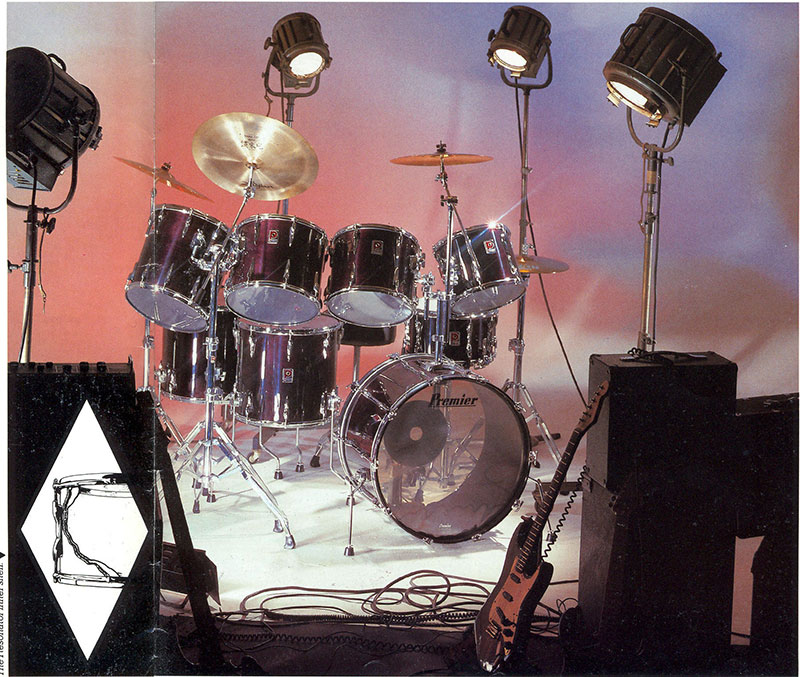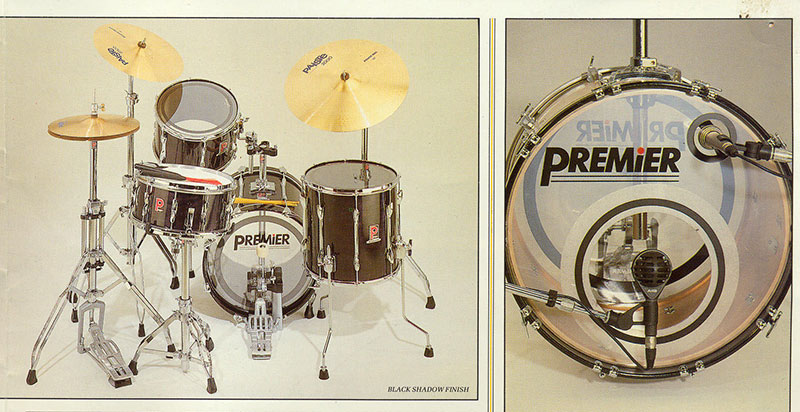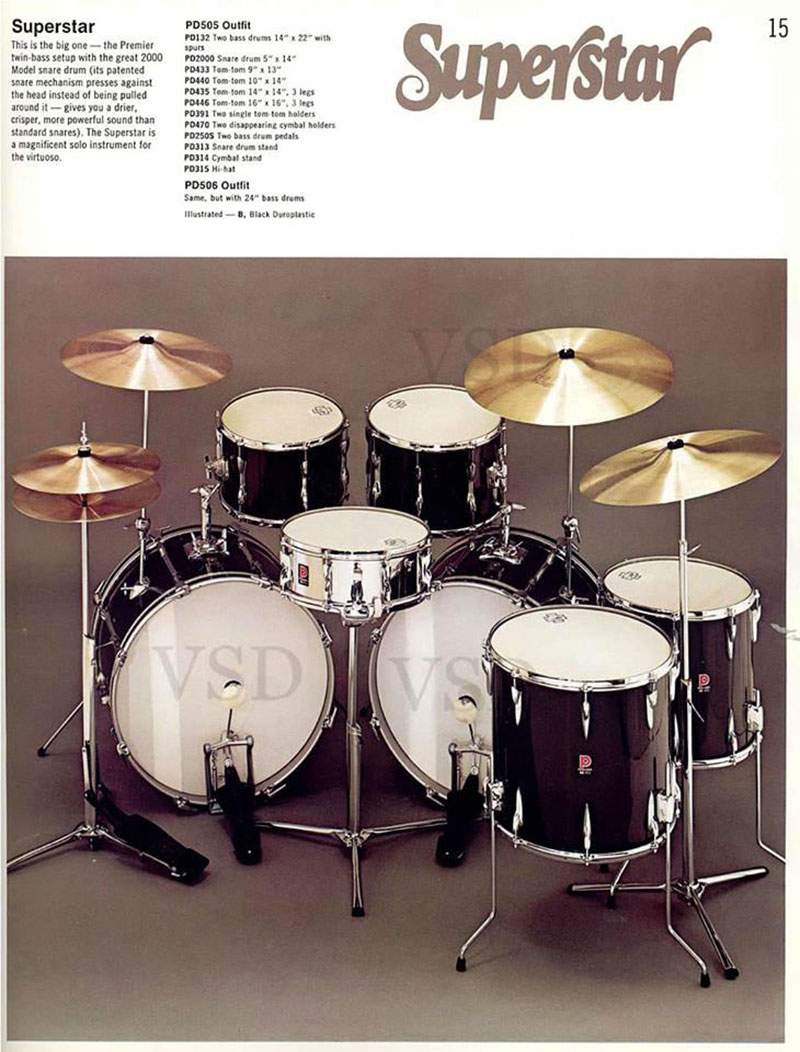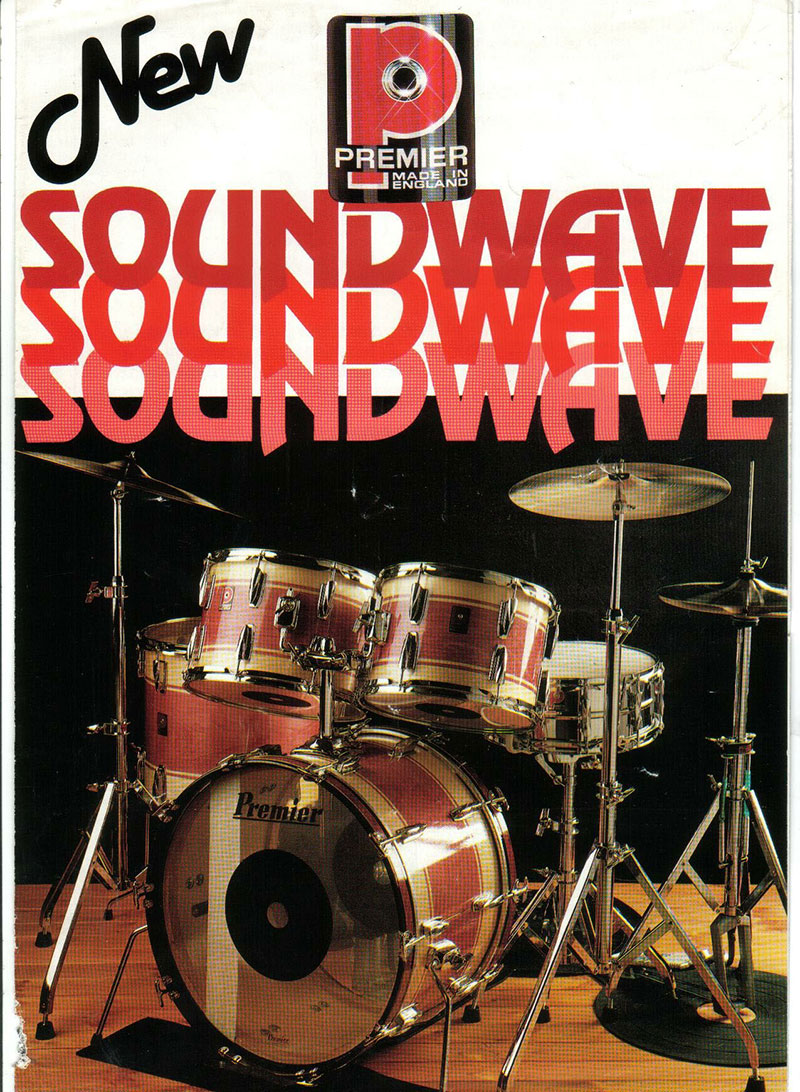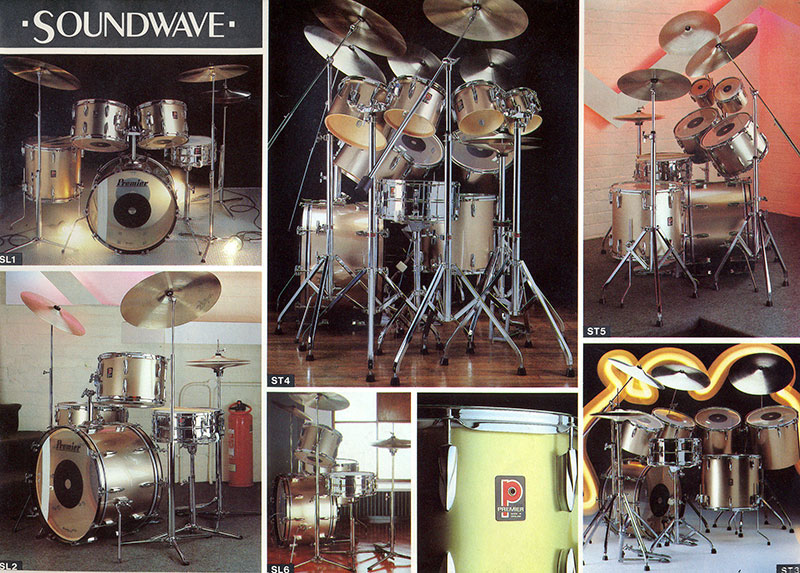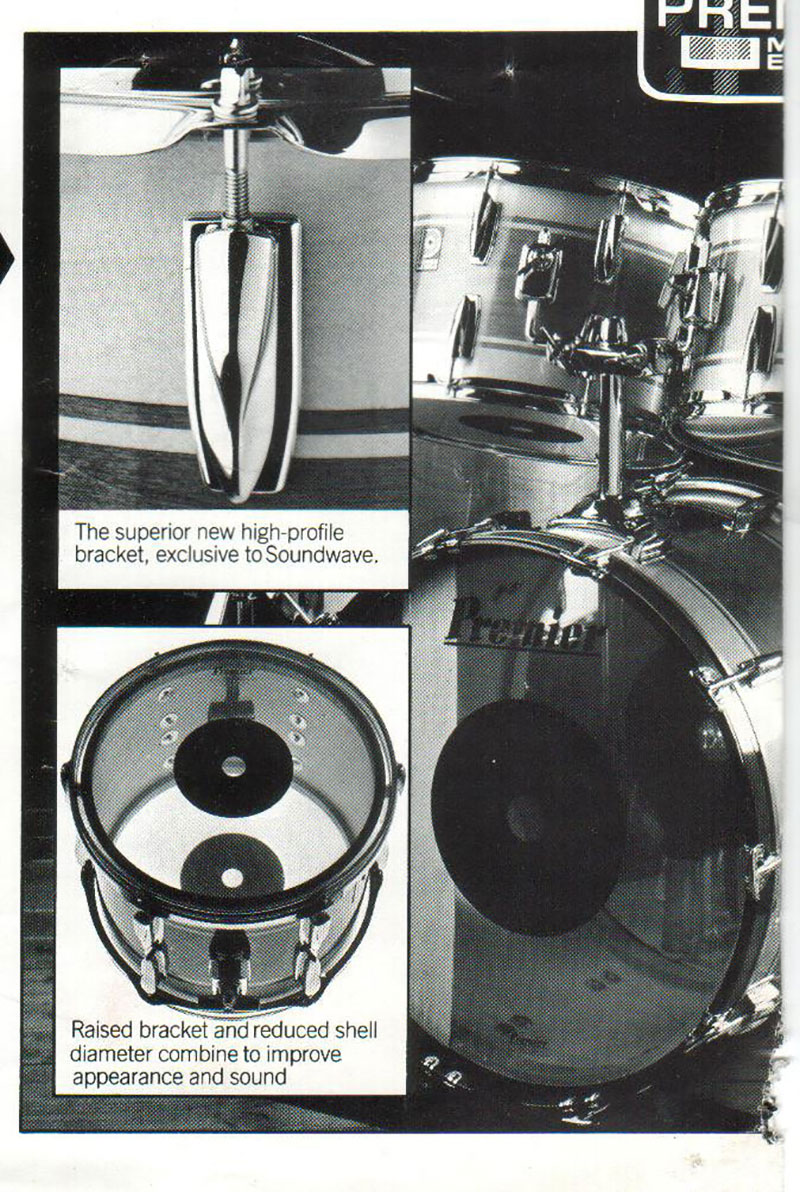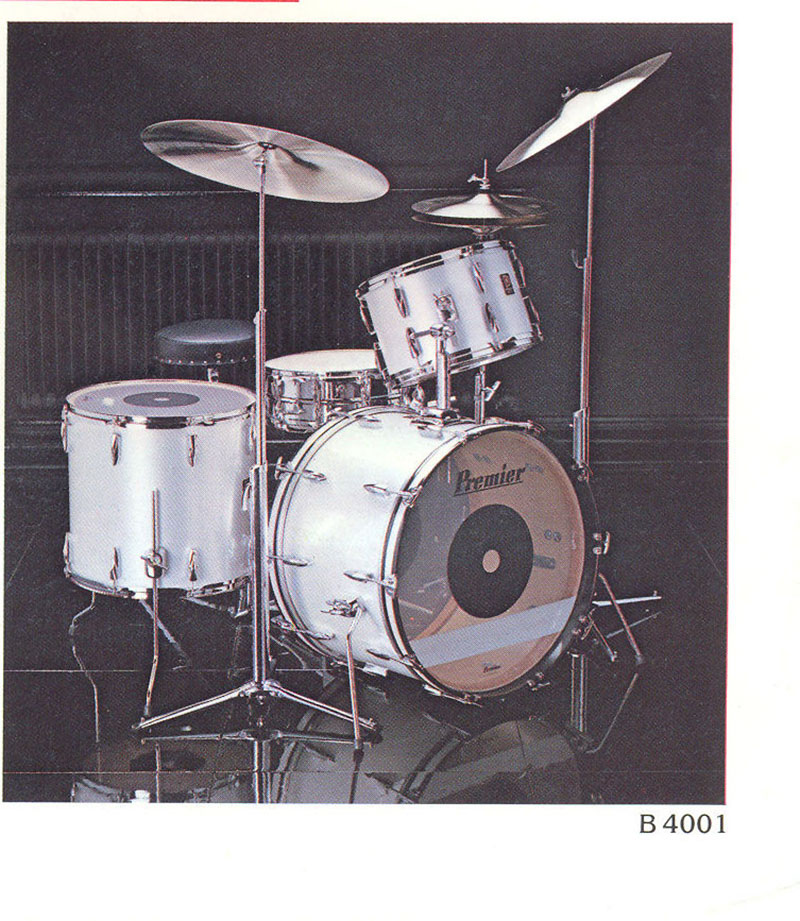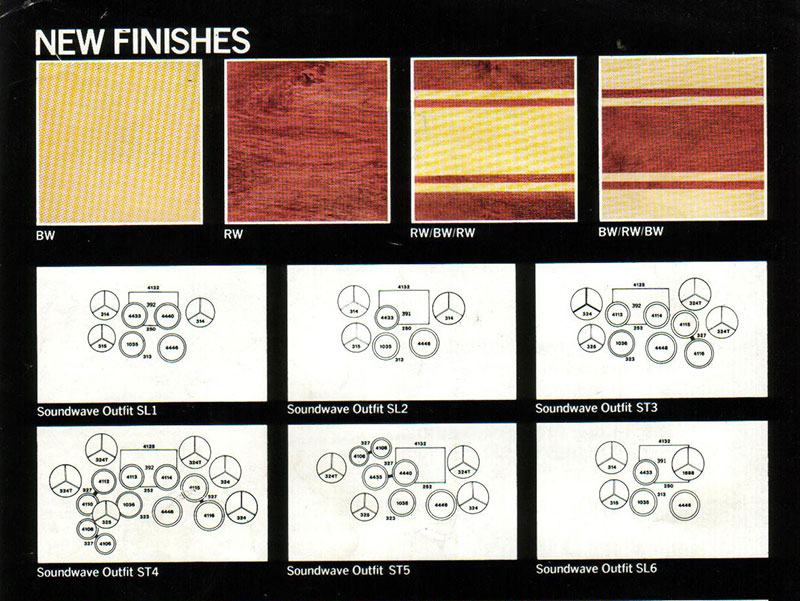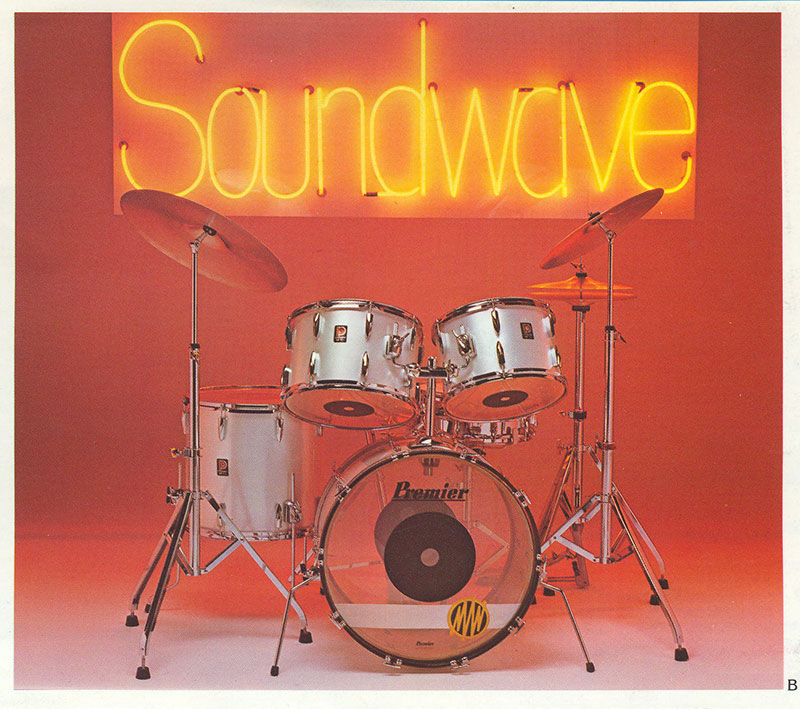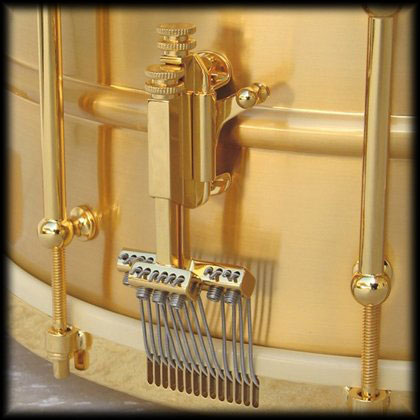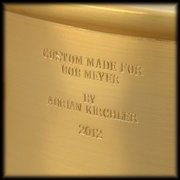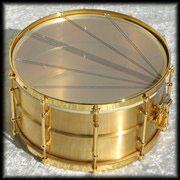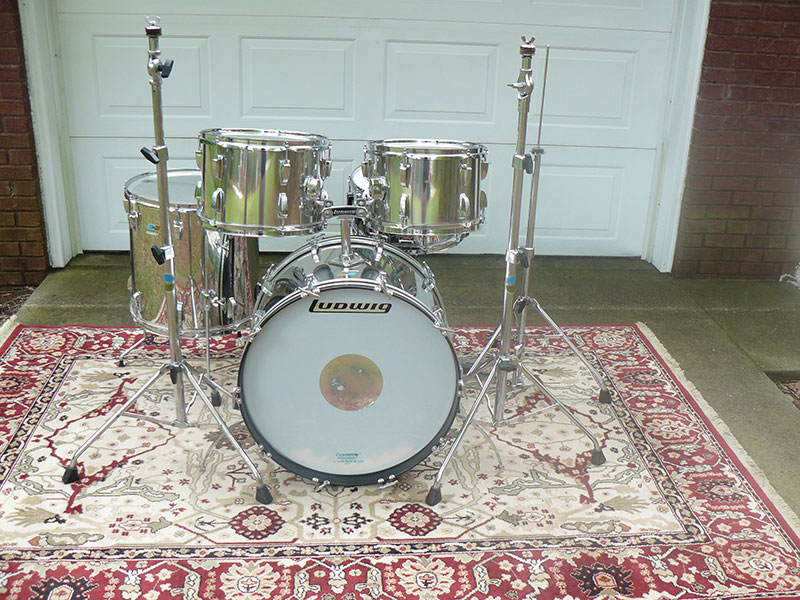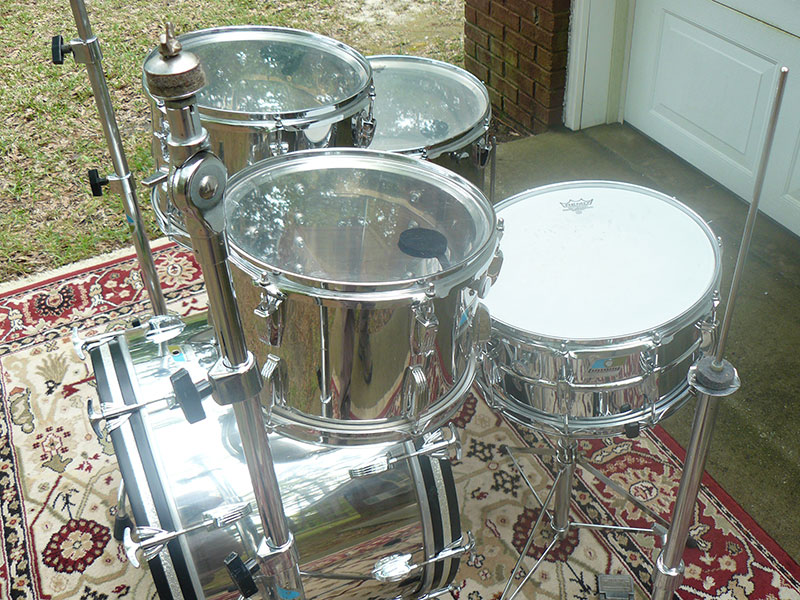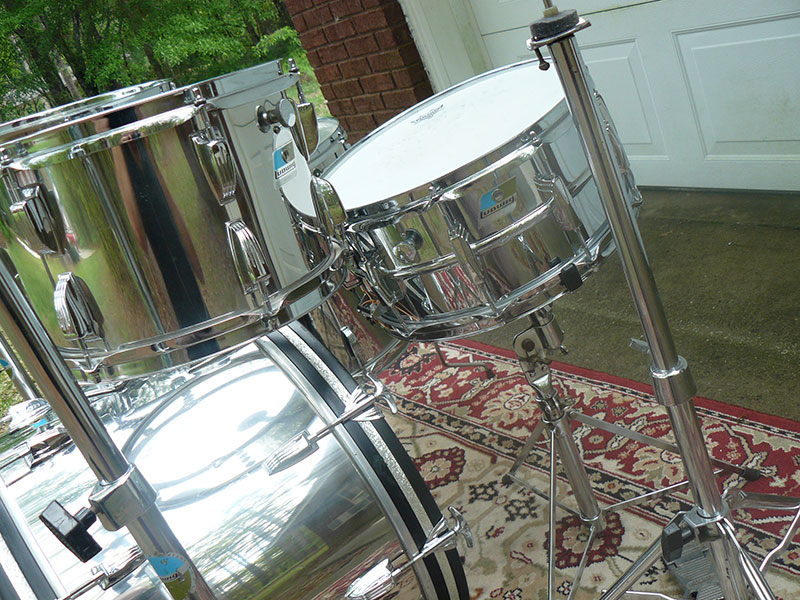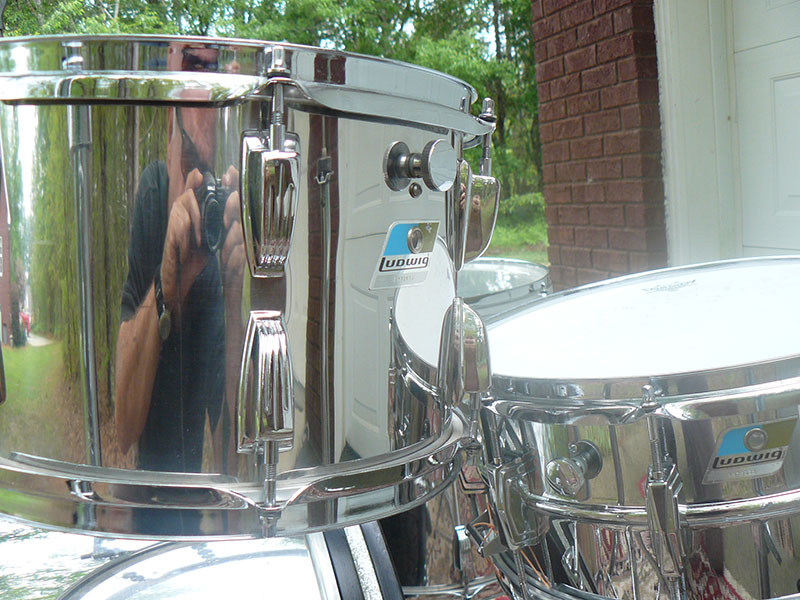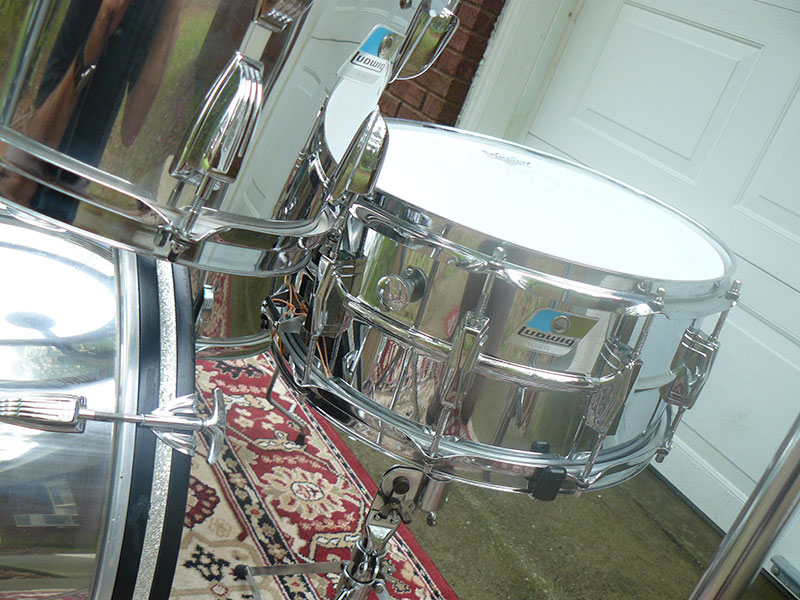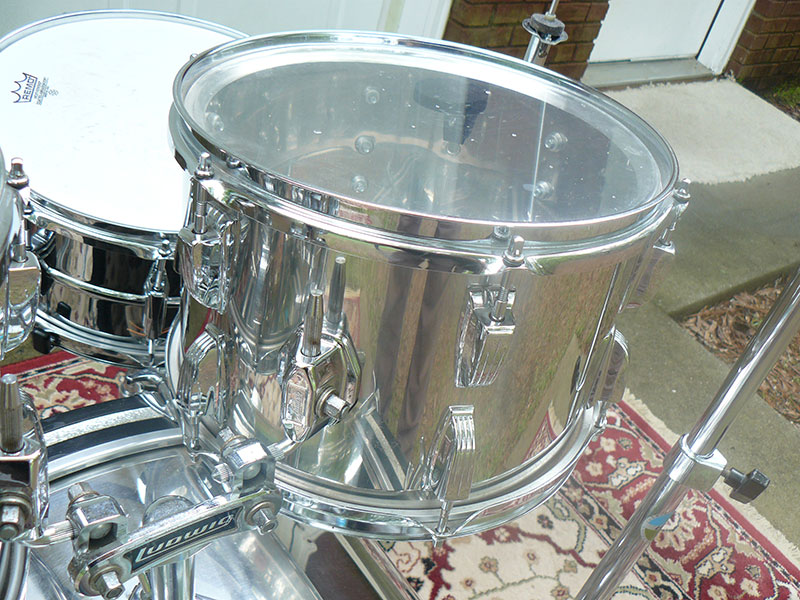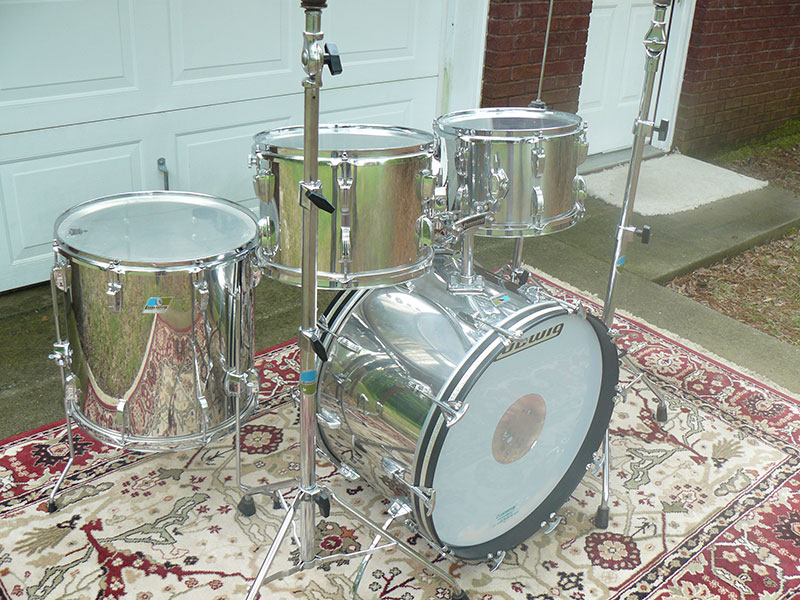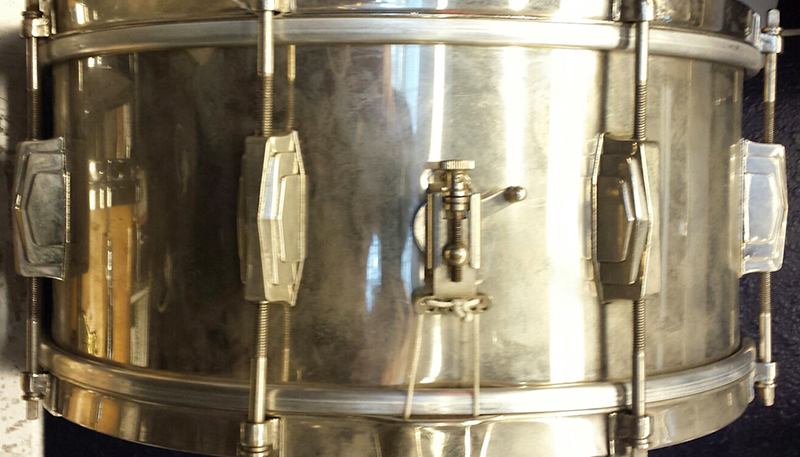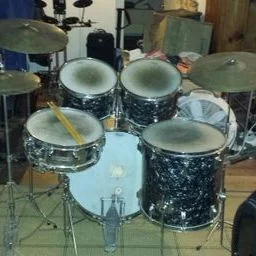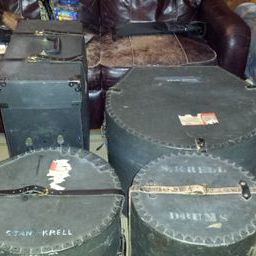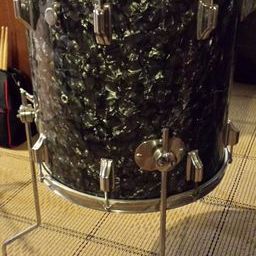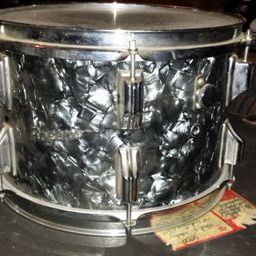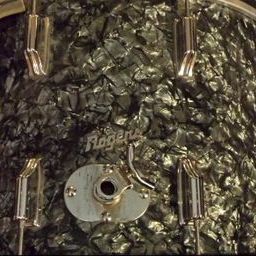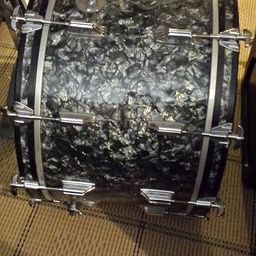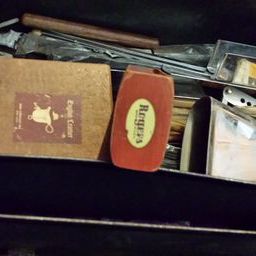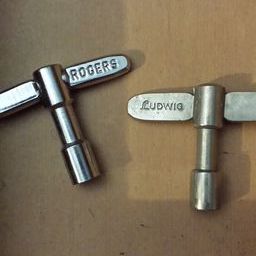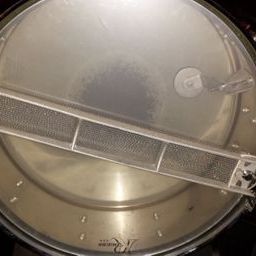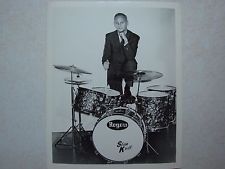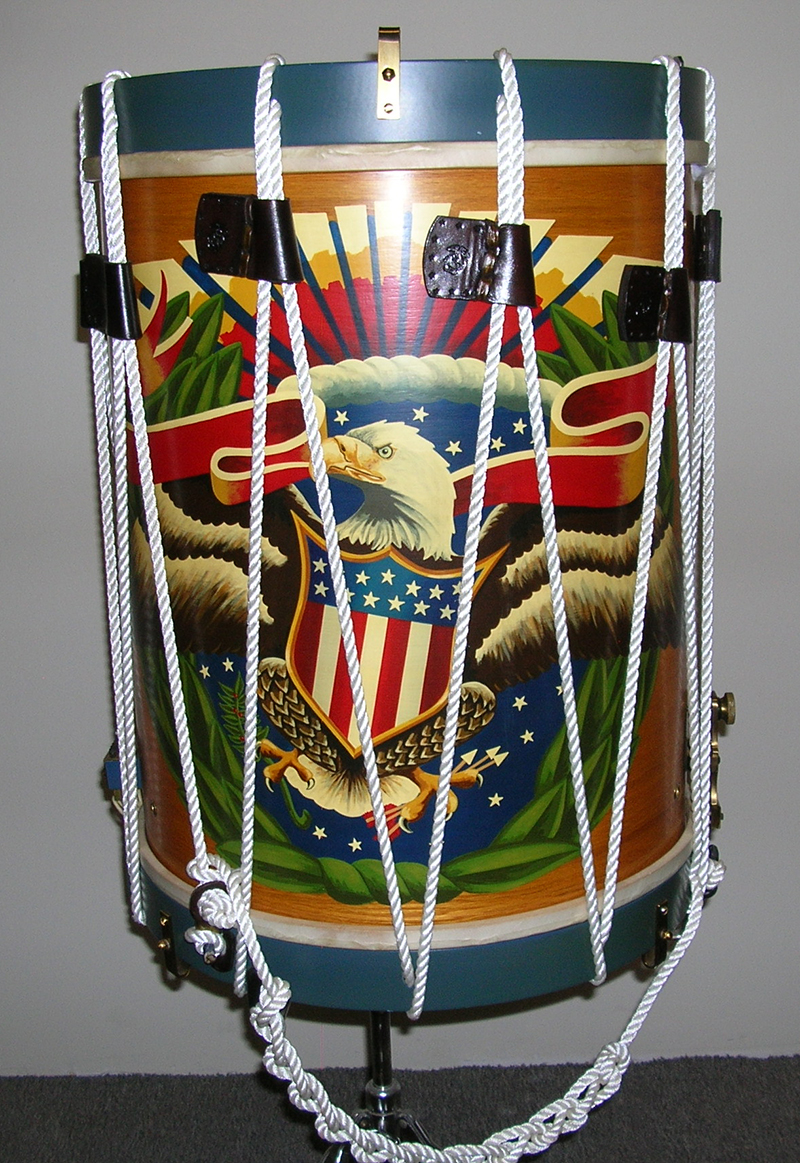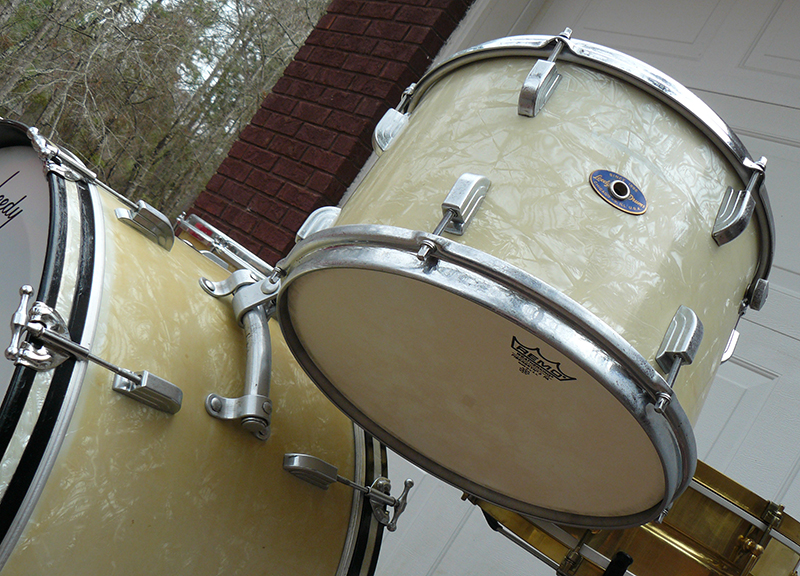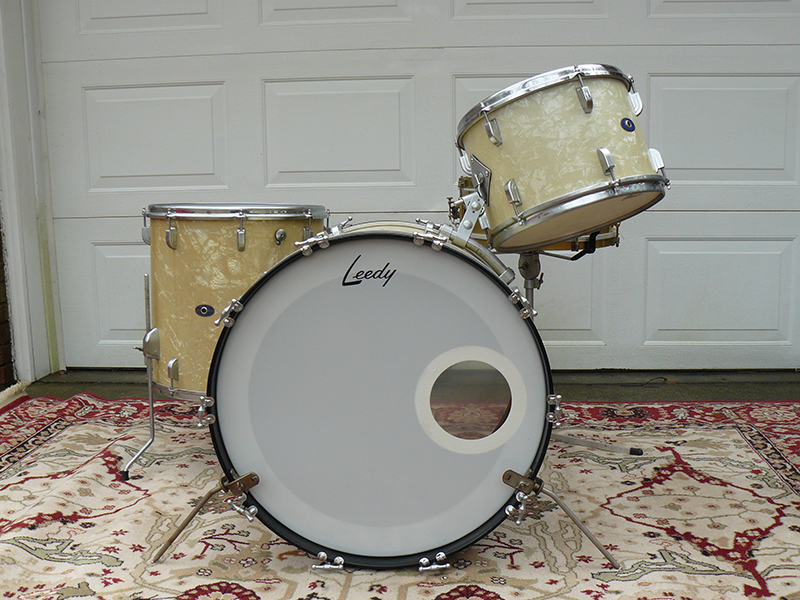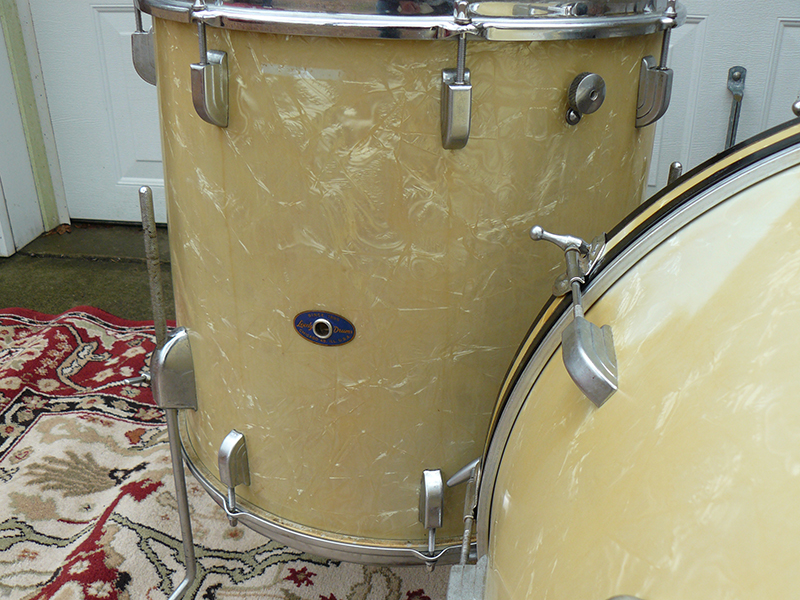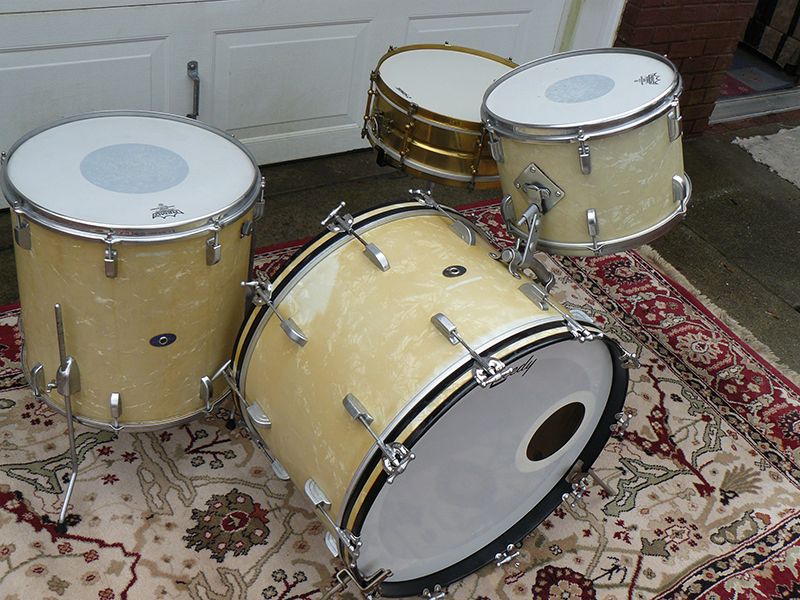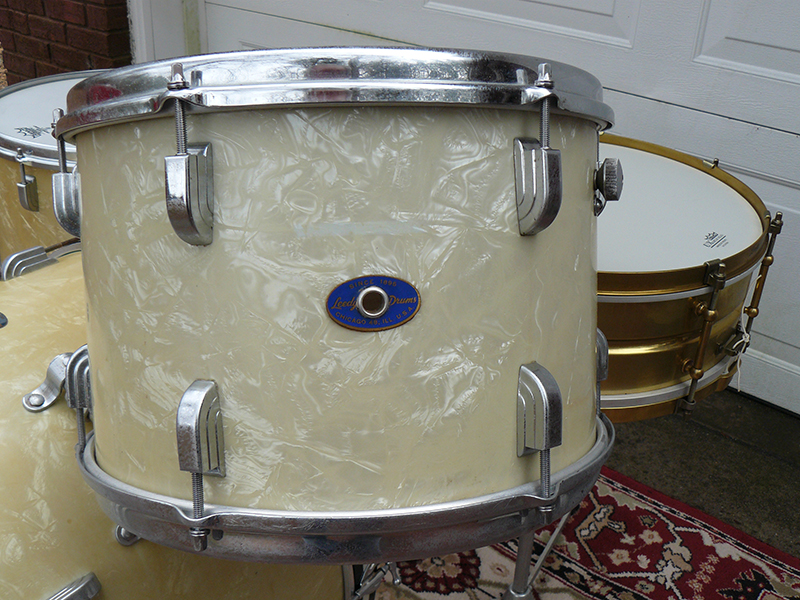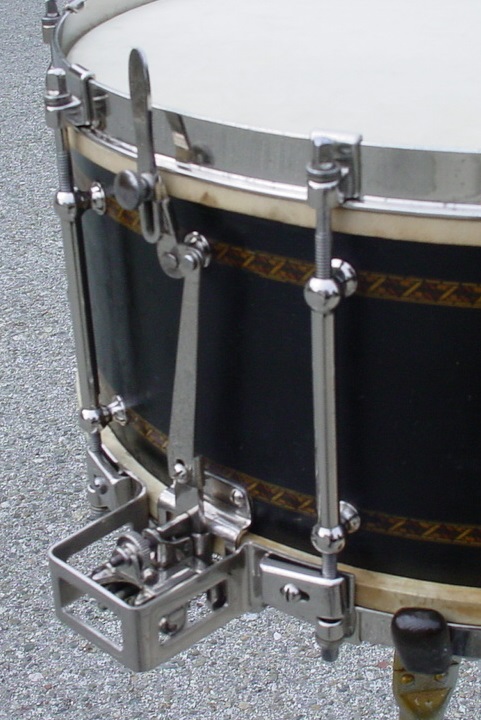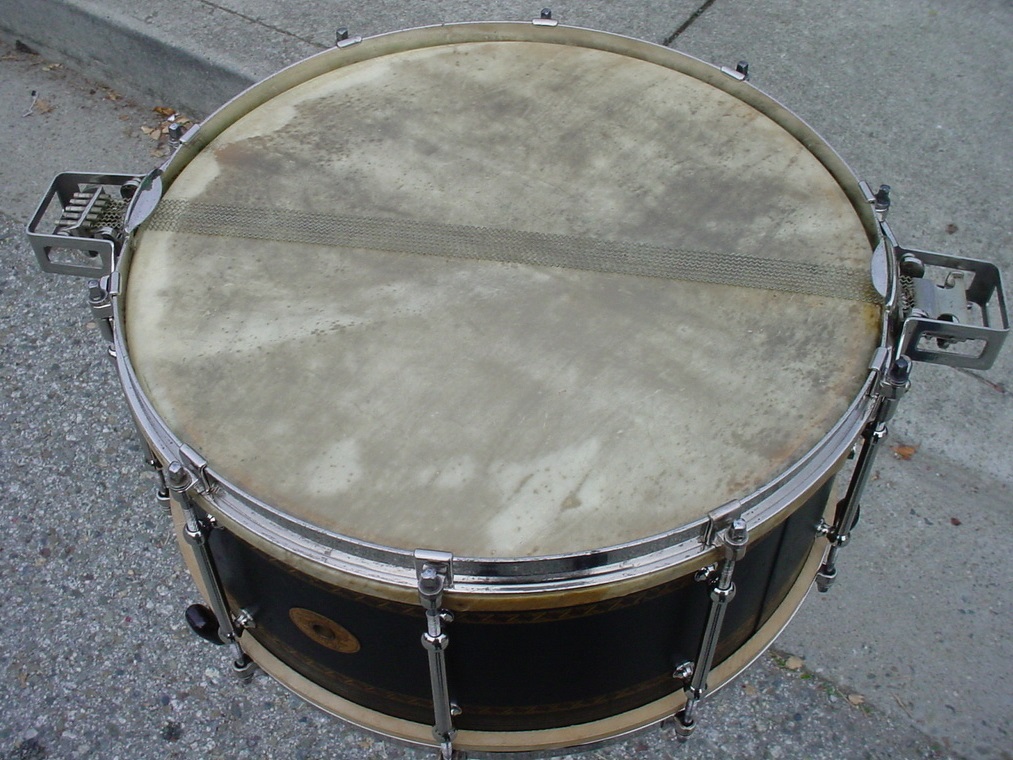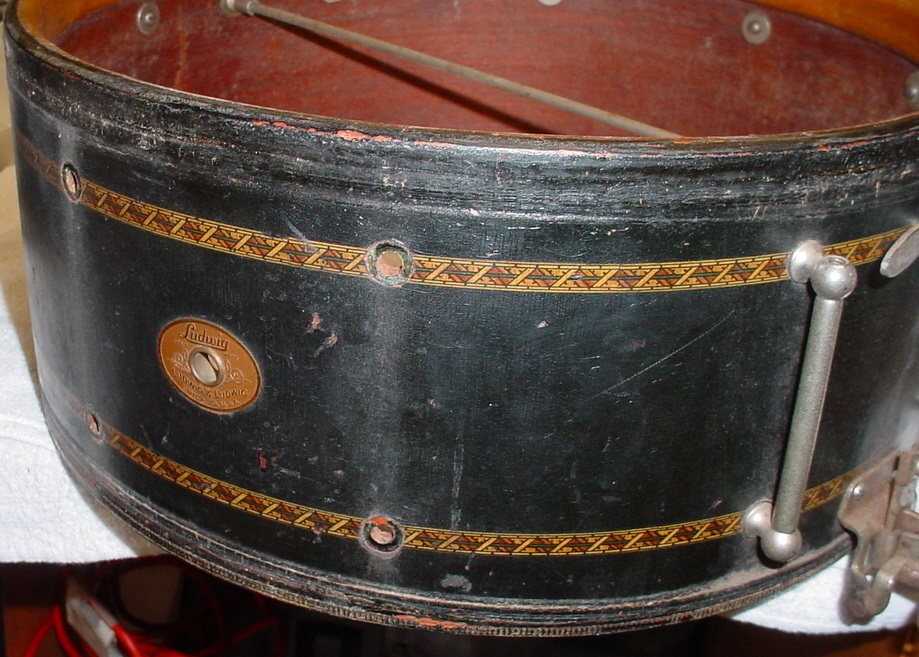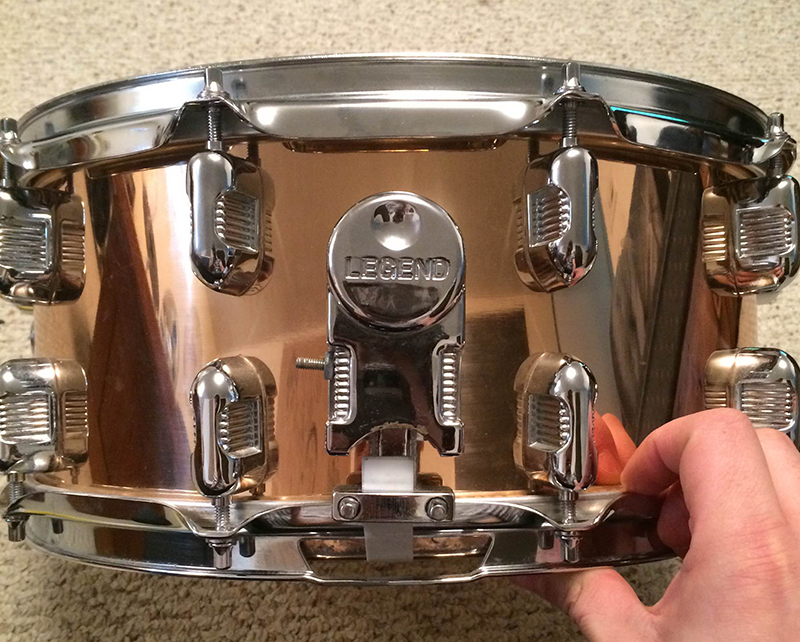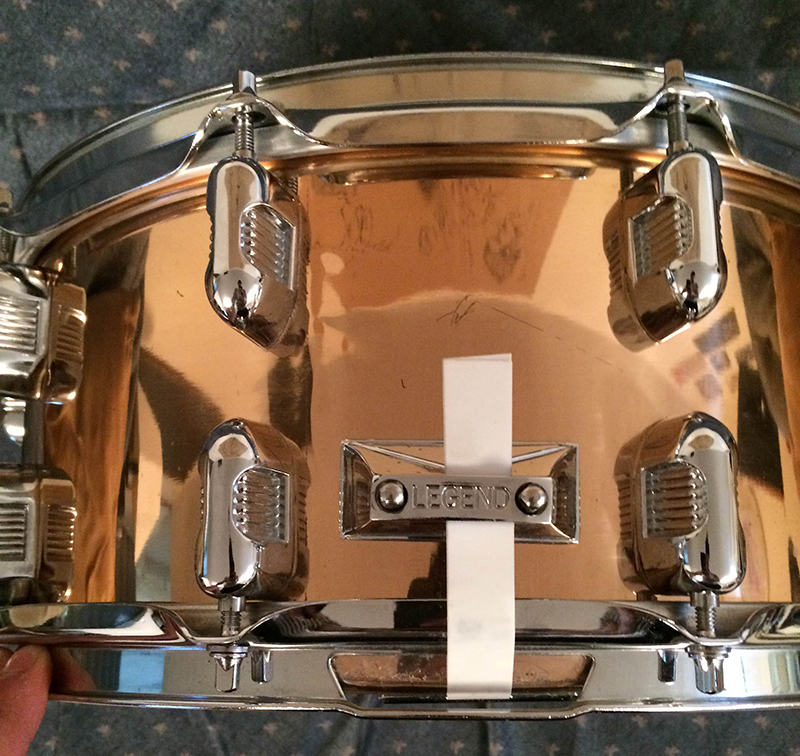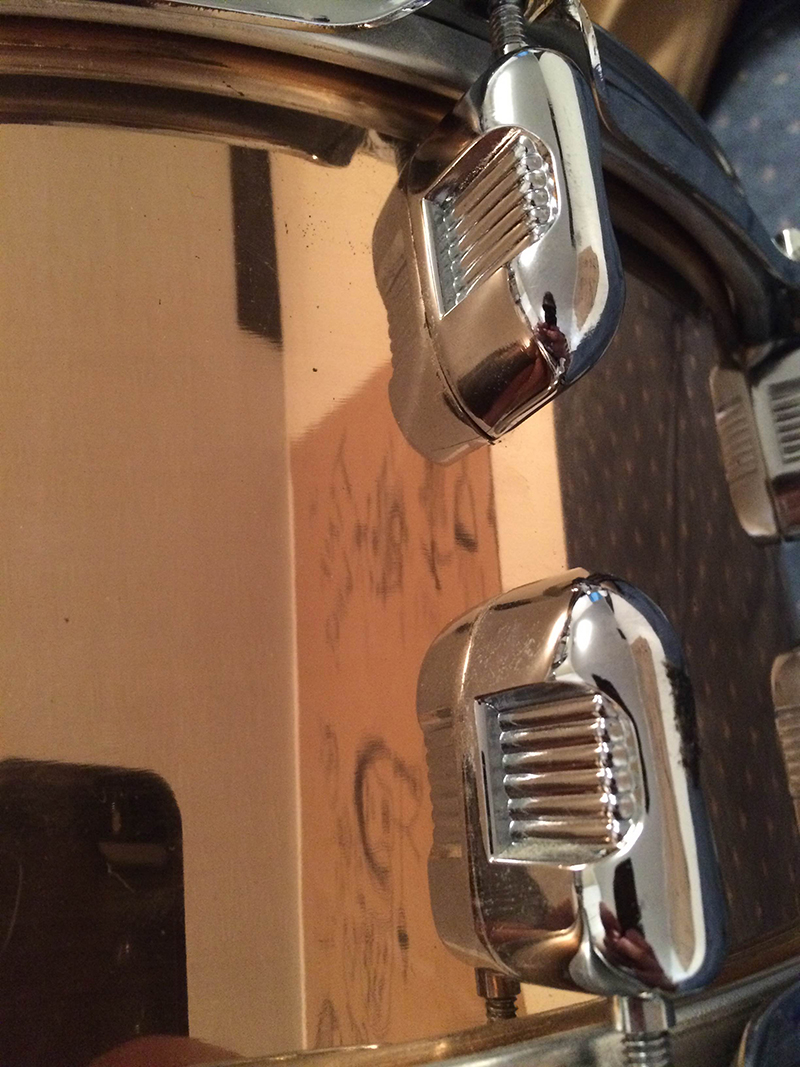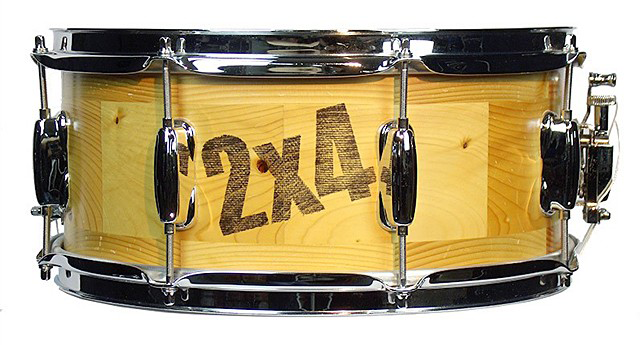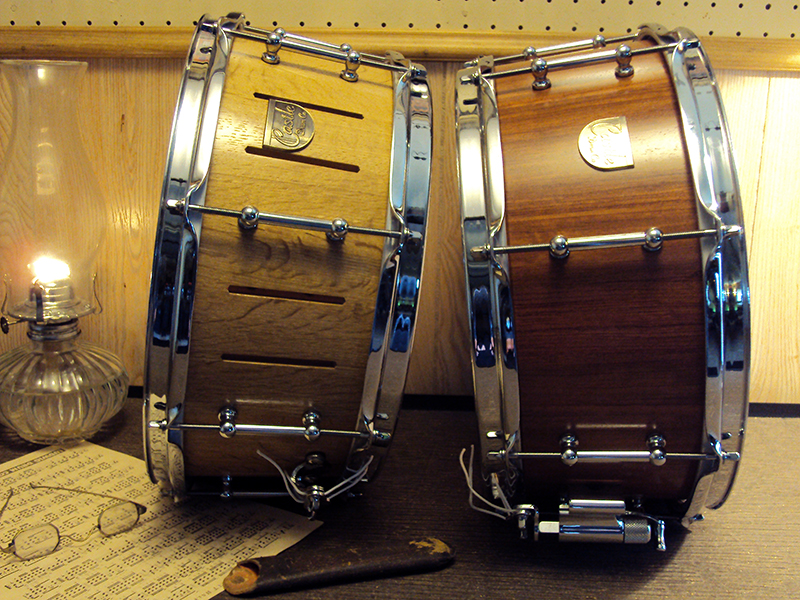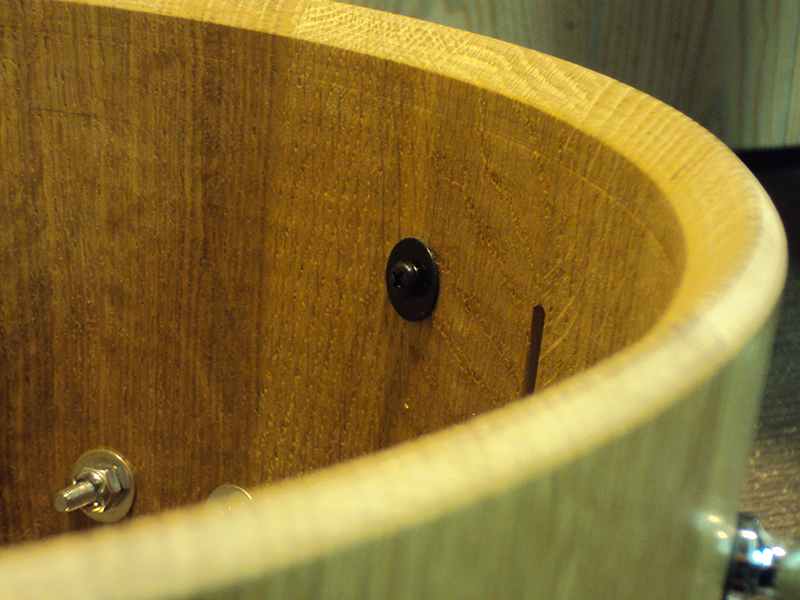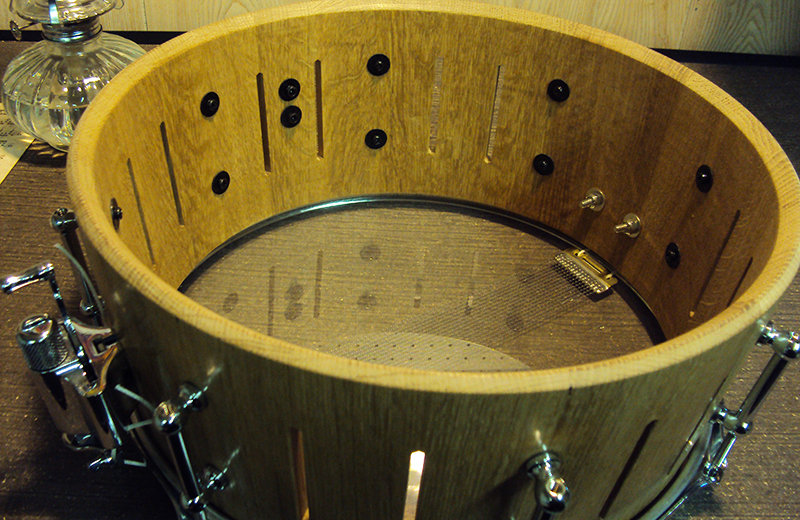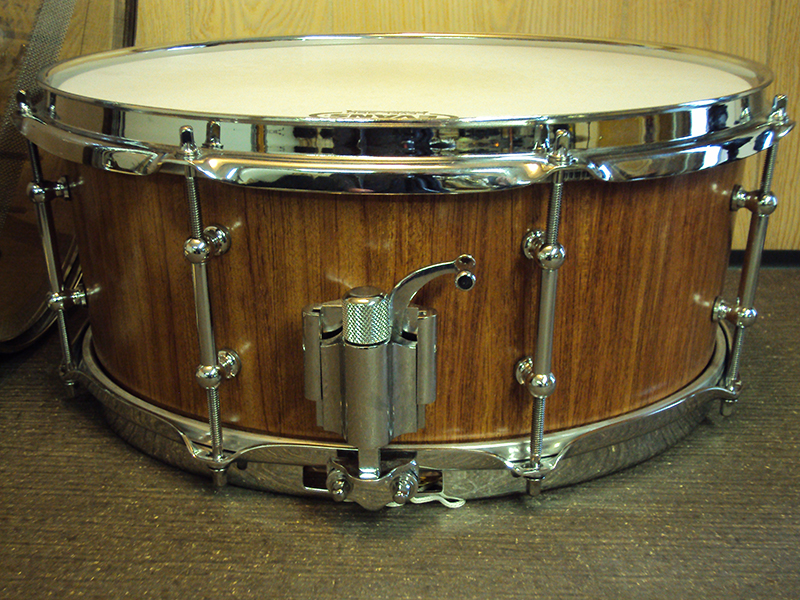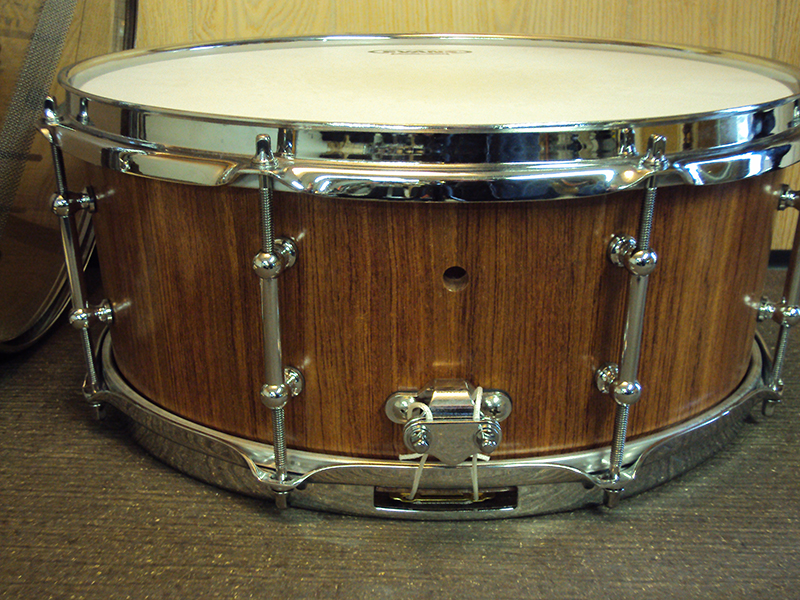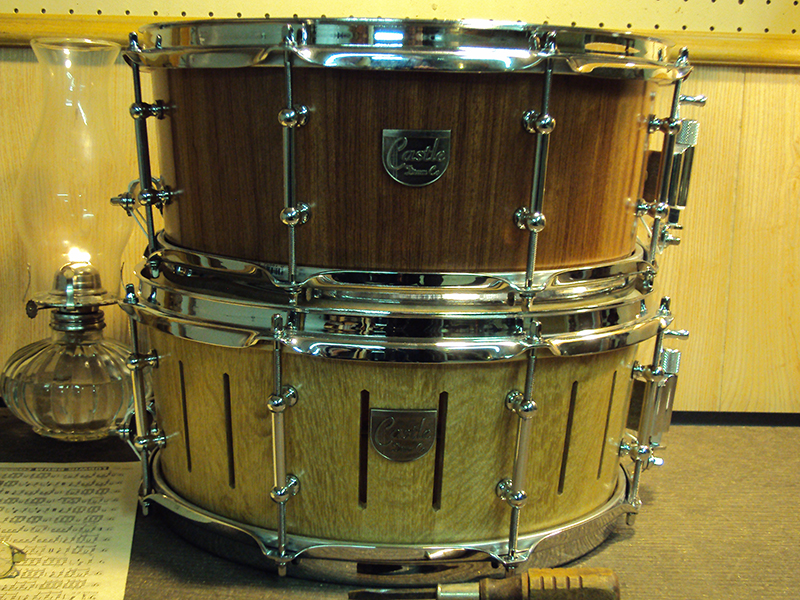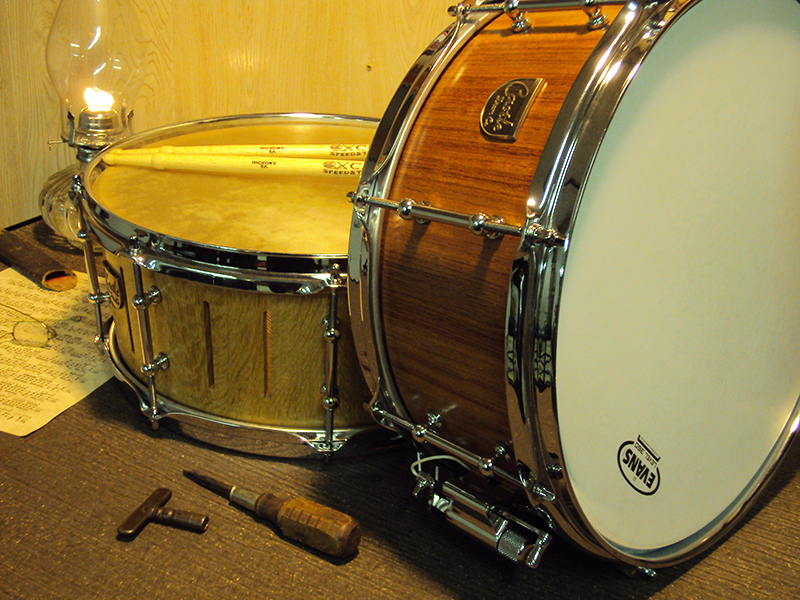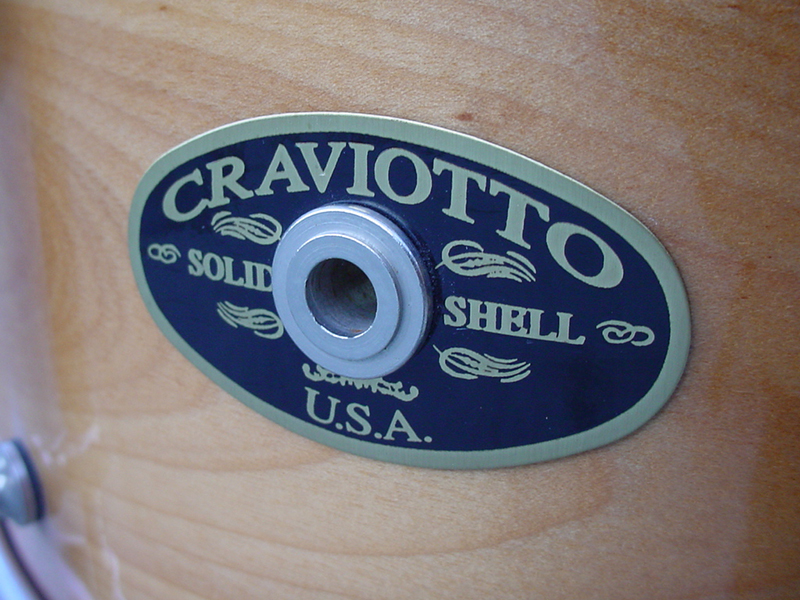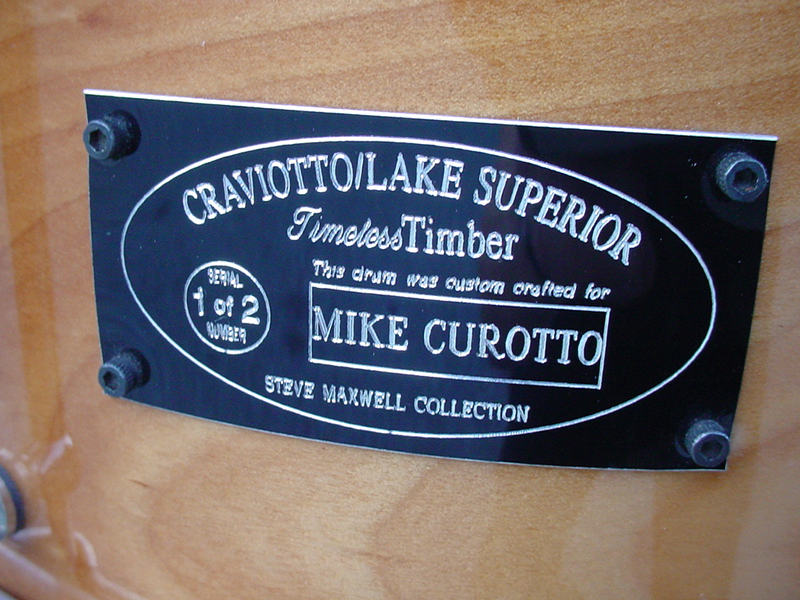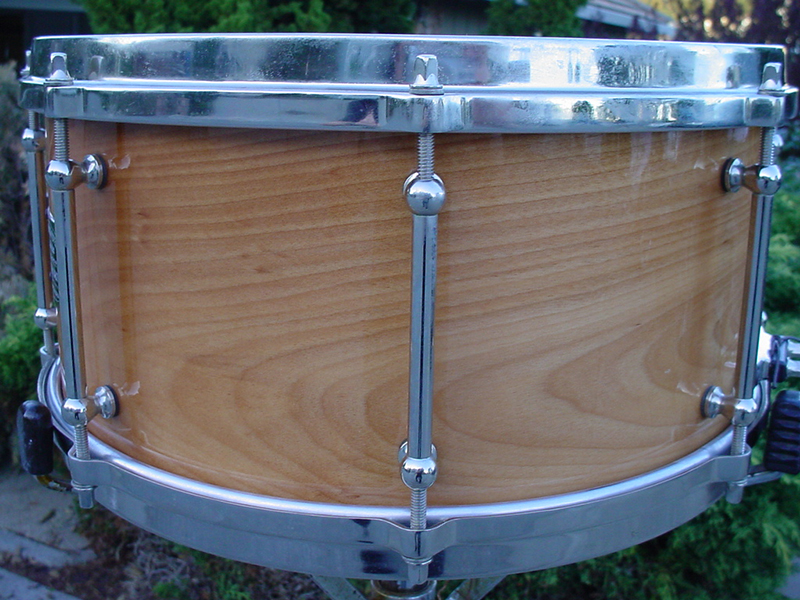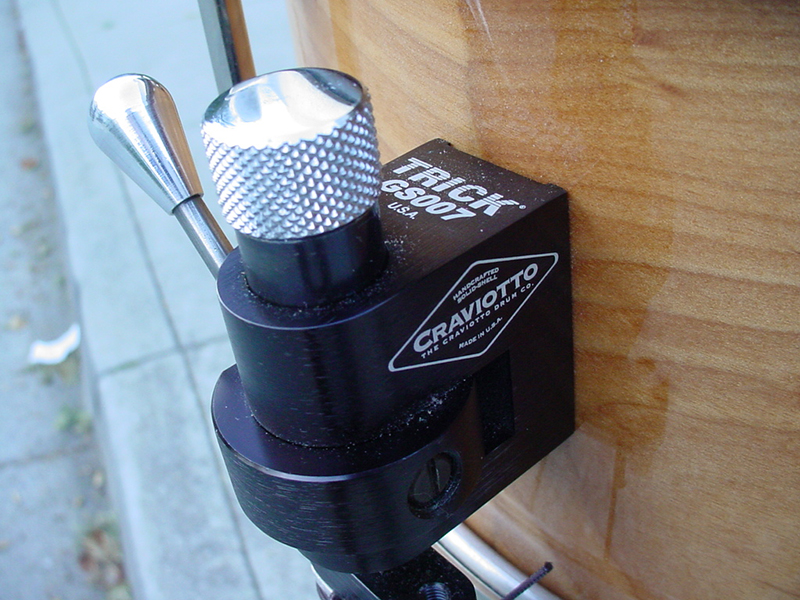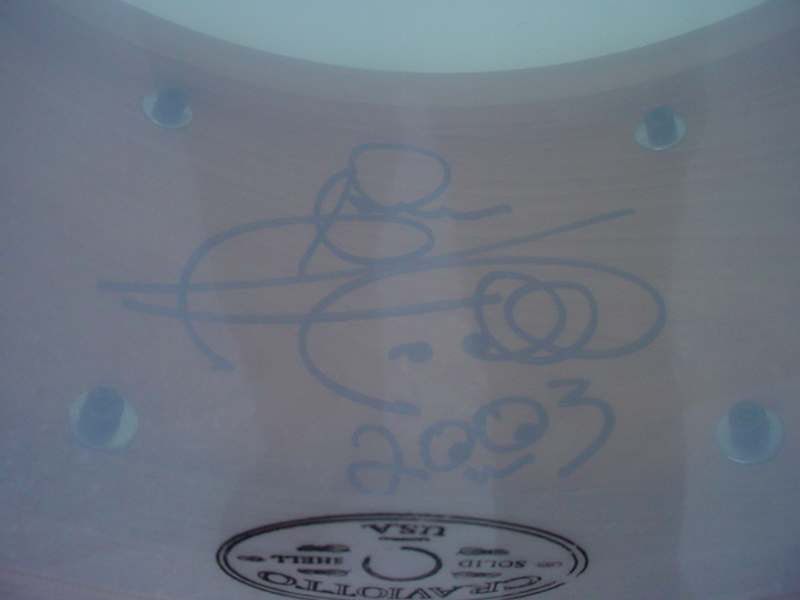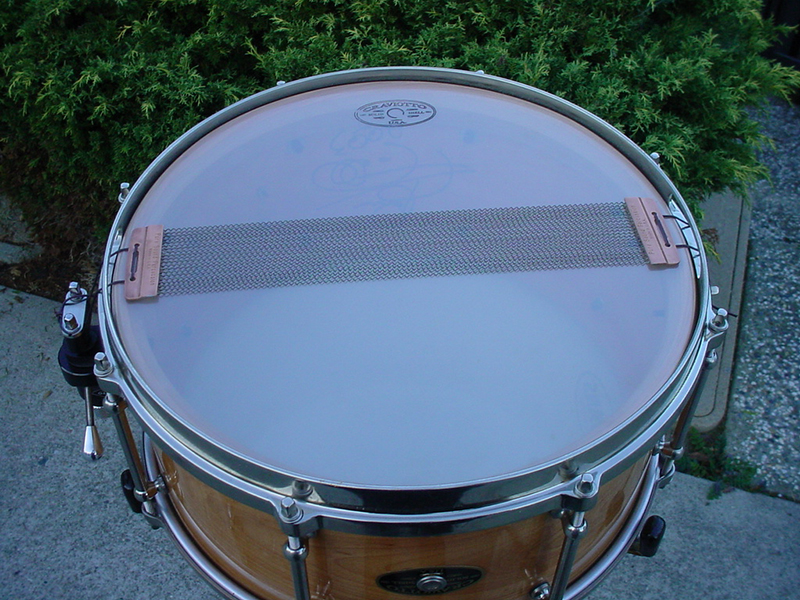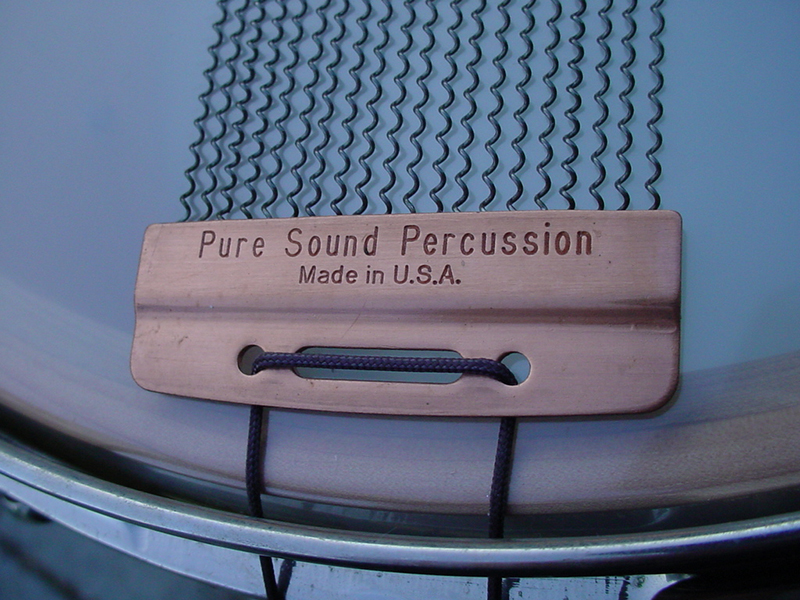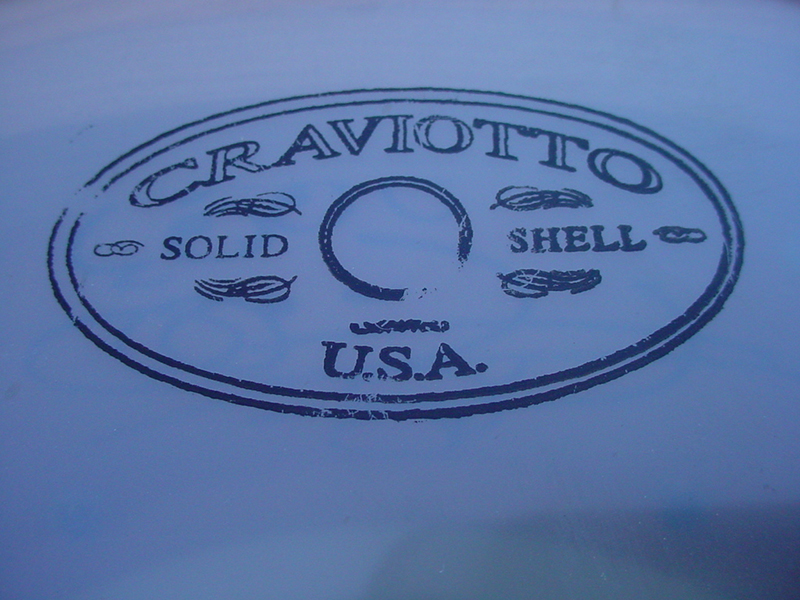Between 1967 and 1972, Premier experimented with lots of different fittings and mounts on their drum sets; as discussed previously, many kits in circulation today don’t match catalogue sets as they are made up from shells and fittings from different models. One can usually determine the era of a set, but generally drums from this period are a mixture of shells and fittings so don’t fit specific catalogue configurations.
By 1976 Premier had settled on some hardware design choices, which became uniform across all models and these features remained through to the late 1980’s. The 1976/77 catalogue still gives us drum set model numbers - B202, 604,605, 606, etc and the B203 and B204 featuring internal liners (Resonator). However, we see the introduction of the 392-50 tom post mount and 392 double tom holder across all models, with matching bass drum and floor leg mount blocks. It’s noticeable that the sets in this catalogue mostly have 8 lugs on bass drum, but the larger sets such as the 305 and 717 feature 10 lugs on the bass, a feature that became synonymous with their flagship sets (Elite, Resonator, Soundwave).
1978/9 catalogue features three new kits – ‘Elite’, ‘Resonator’, ‘Soundwave’. Firstly I’m going to focus on the ‘Elite’.
Premier Elite drums, from late 1970’s
The Elite retains the individual model names from the previous catalogue, but all bass drums now feature 10 lugs except the 201 which is a 20,12,14 configuration. This is a set seldom seen and highly sought after. The bass drum featured fold out bass drum spurs with spikes & removable rubber tips. By now all shells were birch with beech reinforcement hoops, all toms came with ‘tone control’ dampers and all fittings were standard as mentioned previously.
‘Identified by their superb good looks and sound, and by the flush-braced tension brackets on double-headed mounted tom toms and bass drums, with matching styled brackets on snare drums and floor toms. This range gives you an incredibly wide choice of drum sizes, types and finishes.’
At a time when many companies still featured single lugs top and bottom on drum shells, Premier retained their ‘flush braced’ single lugs claiming that ‘they take most of the strain out of the opposing tension rods…so as well as looking good this takes the strain away from the shell allowing it to respond more naturally to your playing.’
Die cast hoops were standard on double headed sets, steel hoops on single headed concert toms. Single headed concert Toms were available from 6x6” up to 18x16” and double headed from 13x9” to 18x16”. Customers were encouraged to make up sets from a variety of options, which is why there are so many sets in existence that vary in configuration and colour. A lot of people get hung up on the fact that their kit wasn’t in the catalogue so isn’t original, but in truth the catalogues state that any size, combination and colour are available as custom orders with thousands of parts to choose from. All sets were fitted with Premier’s Blue heads and Lokfast hardware.
In the USA the set configurations that made up the Elite range had names such as ‘Baron’, ‘Kicker’, ‘Superstar’ and ‘Driver’ but like in the UK were available in custom configurations.
By 1980/81 production had moved to solid colours and we no longer see the pearls from the 1960’s and 1970’s. The typical configuration for the standard Elite set was 22,13,14,16 and although the 12x8 was still in production, double tom sets usually have a 13” and 14”.
The Elites were very popular kits in the 1970’s and early 1980’s played by many of Premier’s endorsers and remain popular among players and collectors today. Occasionally one appears in an unusual colour or with a stripe around the shell, probably a custom build. Most commonly they are in Polychromatic Gold, Red or black.
Premier Resonator, from mid 1970’s
Another of Premier’s flagship kits that originated in the 1970’s was the ‘Resonator’.
The Resonator was the brainchild of Alan Gilby who, in 1972, had experimented with metal liners in some of Kenny Clare’s Ludwig drum shells. The principles & design was developed with Premier, and so was born the Resonator; a drum set that had normal drum shells with a thinner 3 ply wooden ‘resonator’ liner sprung inside. The outer shell mounted all the hardware, leaving the resonant liner free to do its job as a smooth sound chamber, enhancing the drum’s projection.
The first Resonator was named the ‘Kenny Clare’ and appeared in the 1975 catalogue boasting ‘a new really professional outfit that represents the most dynamic breakthrough to hit the percussion world in years. It gives you the ultimate in sound, power and performance…’ Anyone who has seen these drums close up would immediately notice discrepancies between Alan Gilby’s original concept and Premiers production, namely by the fact that the bass drum spurs and tone control dampers fitted to the drums pierced the resonant liners!
It wasn’t until the late 1970’s with the fold out bass drum spurs and other fittings that had been standardized, that the Resonator’s internal liners were smooth and unhindered by any hardware (apart from the 392-50 tom post mount on the bass drum). Alongside the Elite, the Resonator was one of Premier’s flagship sets and remained so for a number of years.
It should be noted, that Gilby’s original design prescribed that the inner liners would act as the drums bearing edge with the heads resting on these rather than the outer shells. I have seen this feature on a couple of early sets from the mid 1970’s, but by the late 1970’s and early 1980’s the liners on all sets were flush with the bearing edges, which were standard Premier profile.
The resonator kits were essentially Elites with a resonant liner fitted – birch shells, with 3 ply beech sprung inside the shell - 10 Lugs on the bass drum and die cast hoops on the toms. The resonator had colour options available that other sets didn’t, mostly a choice of coloured band around the shells. As with all sets, sometimes a colour appears that has all the Premier drummers discussing in forums as to whether they’re original, but again it is to be noted that just because it isn’t in a catalogue doesn’t mean it doesn’t exist! Premier offered custom options on all their high end sets, so anything was possible.
They became popular among drummers on both sides of the Atlantic, due to the power and volume of the shells; most famously endorsed by Clem Burke who used them throughout his career in Blondie and right through to his work in the 80’s with Eurythmics.
In the early 1980’s Premier introduced the Black Shadow Resonator, which featured birch shells with the toms in power sizes, described as follows in the catalogue: ‘the finish is unique; a black glass like surface is achieved in a special process that takes no less than 8 days to complete. It captures the natural wood grain perfectly, wrapping it in a deep, dark shroud that subtly reflects and retracts ever changing hues of black with the shifting light.’ The first series of Black Shadow Resonators featured two sets of single lugs on the toms, but by the late 1980’s design had changed to flush braced lugs the length of the shell, in line with other Premier sets of the era. The Roklok tom post mount replaced the oval 392-50 mount and the tom post gave the option to mount a cymbal arm. Alternatively, one had the option of the Fastball tom post. Lacquer finishes were standard in white, red or black with matching lacquered liners. Premier introduced some bright colours in this era, offering yellow, blue and pink with matching liners! These are rarely seen, but really stand out from anything else on the market at the time.
While other companies were realising that clunky hardware attached to drum shells killed resonance, and so began to introduce Rims fittings to toms, Premier argued that their resonator shells had solved this issue a decade before. Premier ceased production of the Resonator in the early 1990’s but they remain a popular kit among players and collectors, in any of their models during their two decades of production.
Premier Soundwave, from late 1970’s
Premier’s other flagship kit that appeared in the late 1970’s was the Soundwave. This set differed from all other Premier drums at the time due to various new features. ‘Instantly recognisable by the smartly designed separate tension brackets on each tom tom and bass drum’ boasted the 1978-9 catalogue ‘offering a free, more vibrant sound.’ The drums featured steel hoops rather than die cast, and the tension rods were square rather than slot headed, offering a much more modern image in keeping with their competitors. All shells were birch with beech reinforcement hoops, fitted with tone control dampers and the same hardware mounts as the Elite and Resonator. Like the Resonator and Elite, bass drums featured 10 lugs. They were generally marketed as a double headed tom set, although concert toms were available, and factory fitted with clear, black dot heads.
The catalogue stated that the drums were ‘available in any finish’, and that despite the lug design differing, the drums could be mixed with those from the Elite range. Rick Buckler from The Jam had a white set that was custom built by Premier, containing a mixture of Soundwave and Elite shells in power sizes. By the early 1980’s, the hardware that came with these sets changed from the ‘Lokfast’ to ‘Trilok’ – heavy duty tripod stands, a move away from the flush based models from the 1960’s and 1970’s.
Sometime around 1982 the Soundwave Mk II was introduced with a slightly reduced shell diameter, allowing the head to overhang the shell improving sound (and maximising bearing edge/head contact). The design of the drums remaining the same as it’s first incarnation, but the lugs were fitted with plinths to raise them from the shells. (These undersized shells are not to be confused with the pre international drums of the 1960’s, the Soundwave sets took standard size heads). Bass drums were listed as being available from 20” to 26”, and double headed toms from 12” to 18”. Again, concert toms were available. Four new finishes became available in natural or stained wood ‘to show off Premier’s fine birch shells.’ These undersized shells were an exclusive for Premier, a design that was taken on board by other major drum companies in later years. The shells really sing on the couple of sets that I’ve come across, with lovely projection.
By 1985 the Soundwave was no longer in production.

